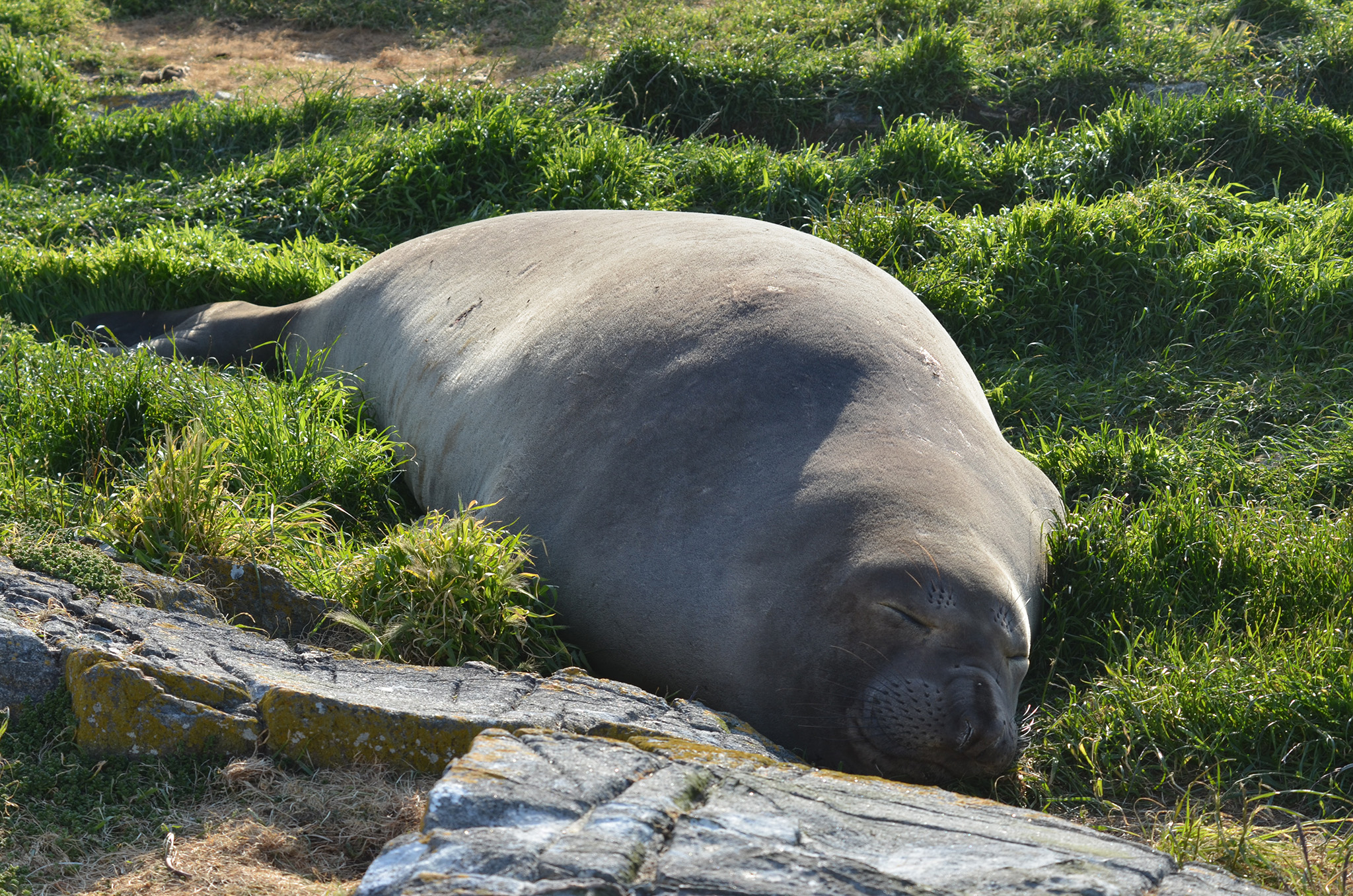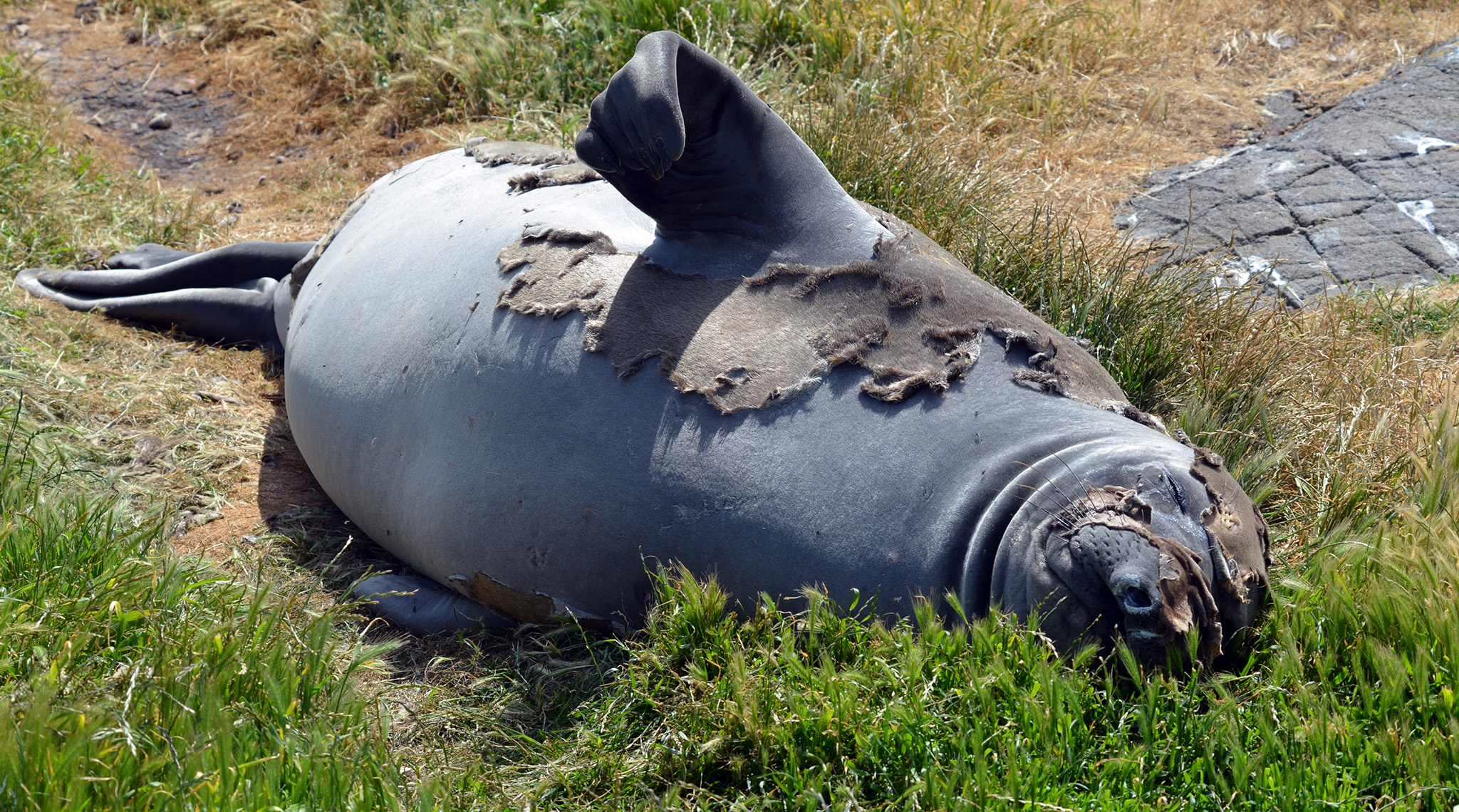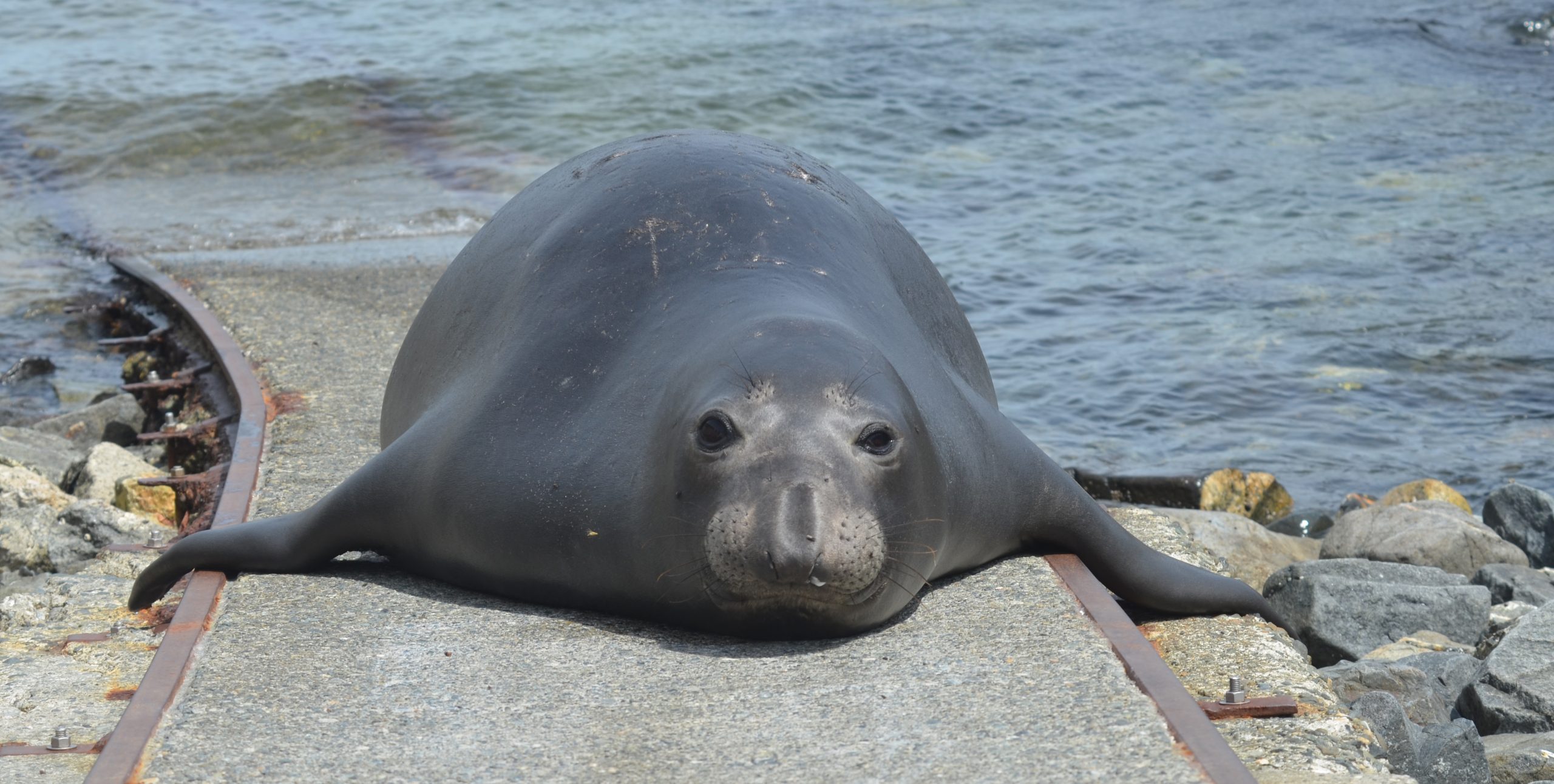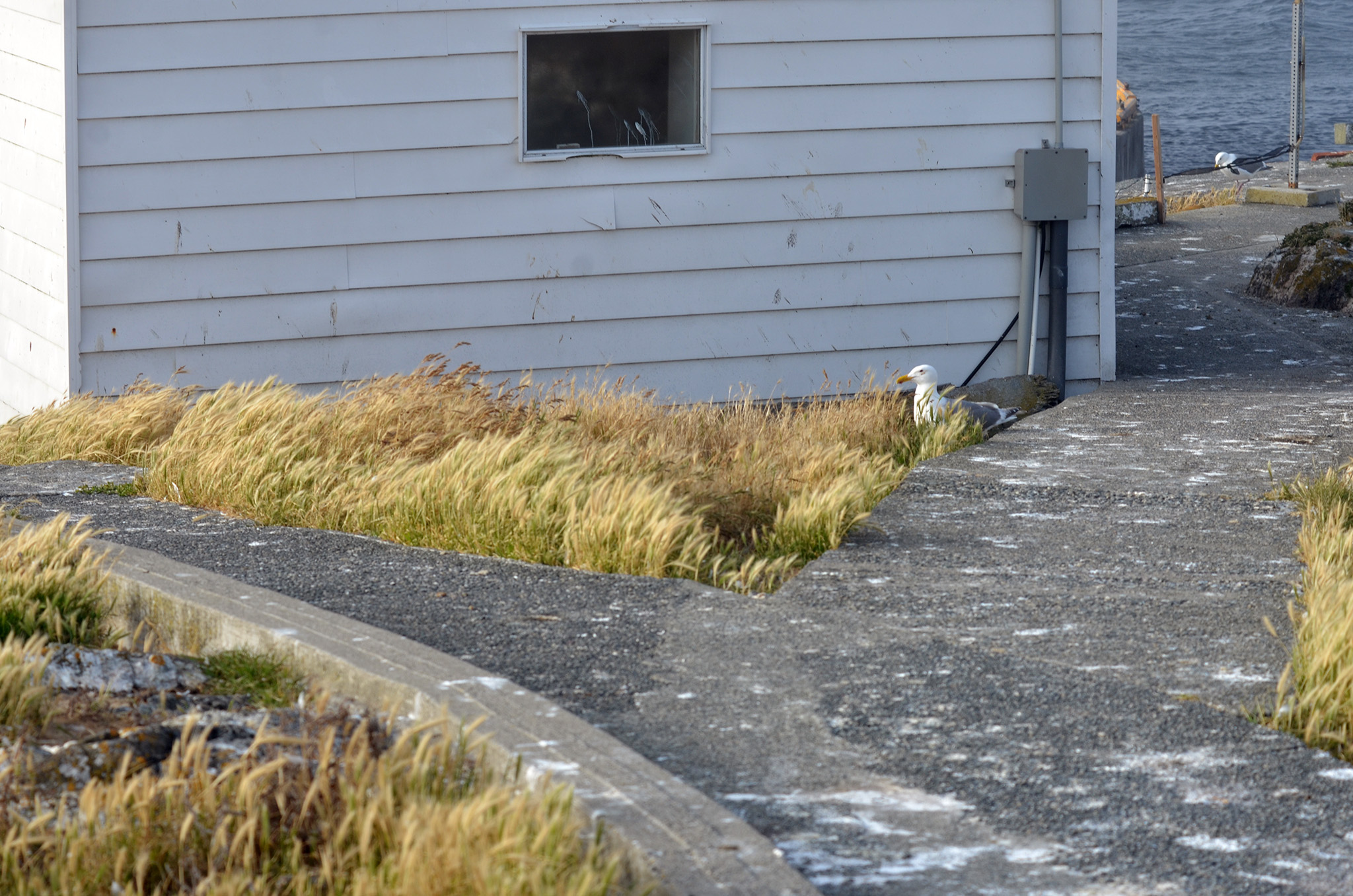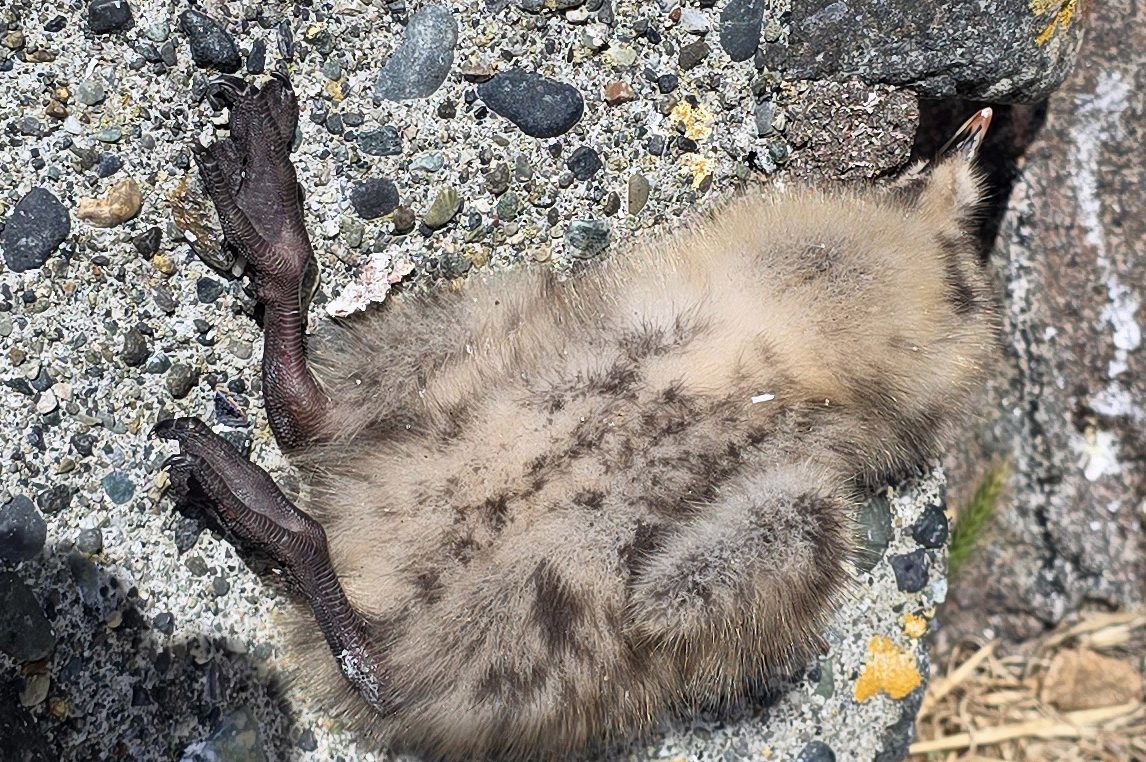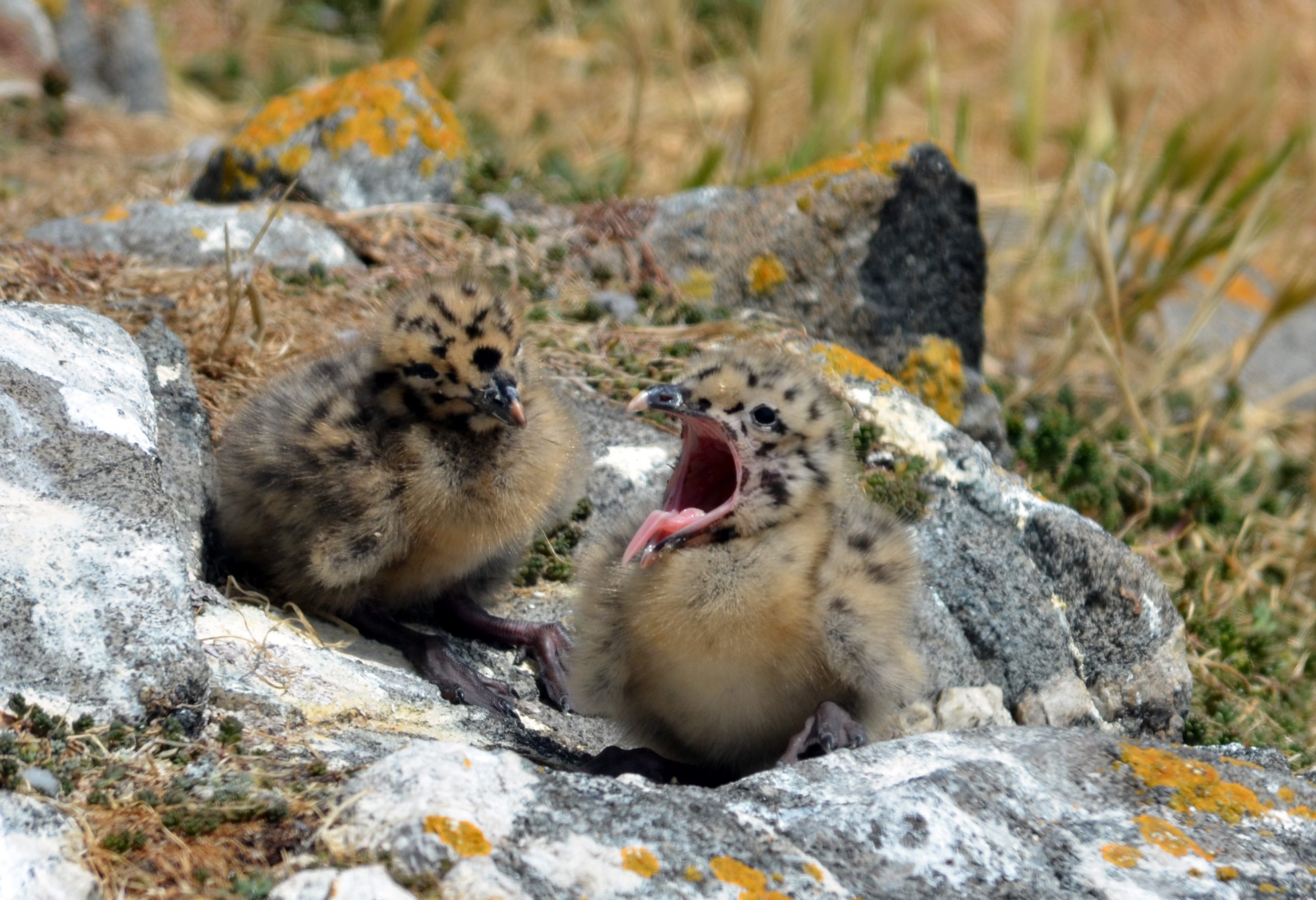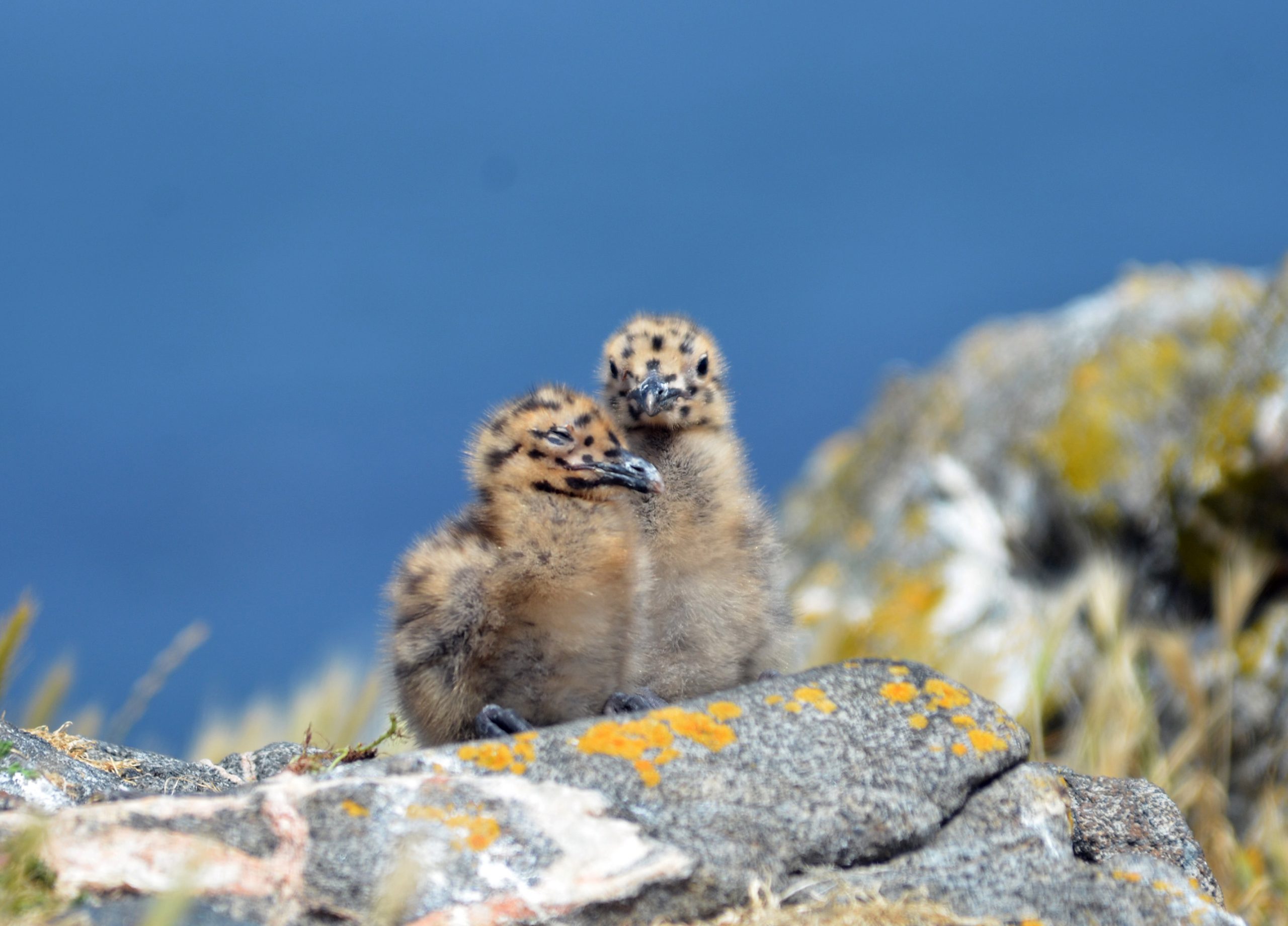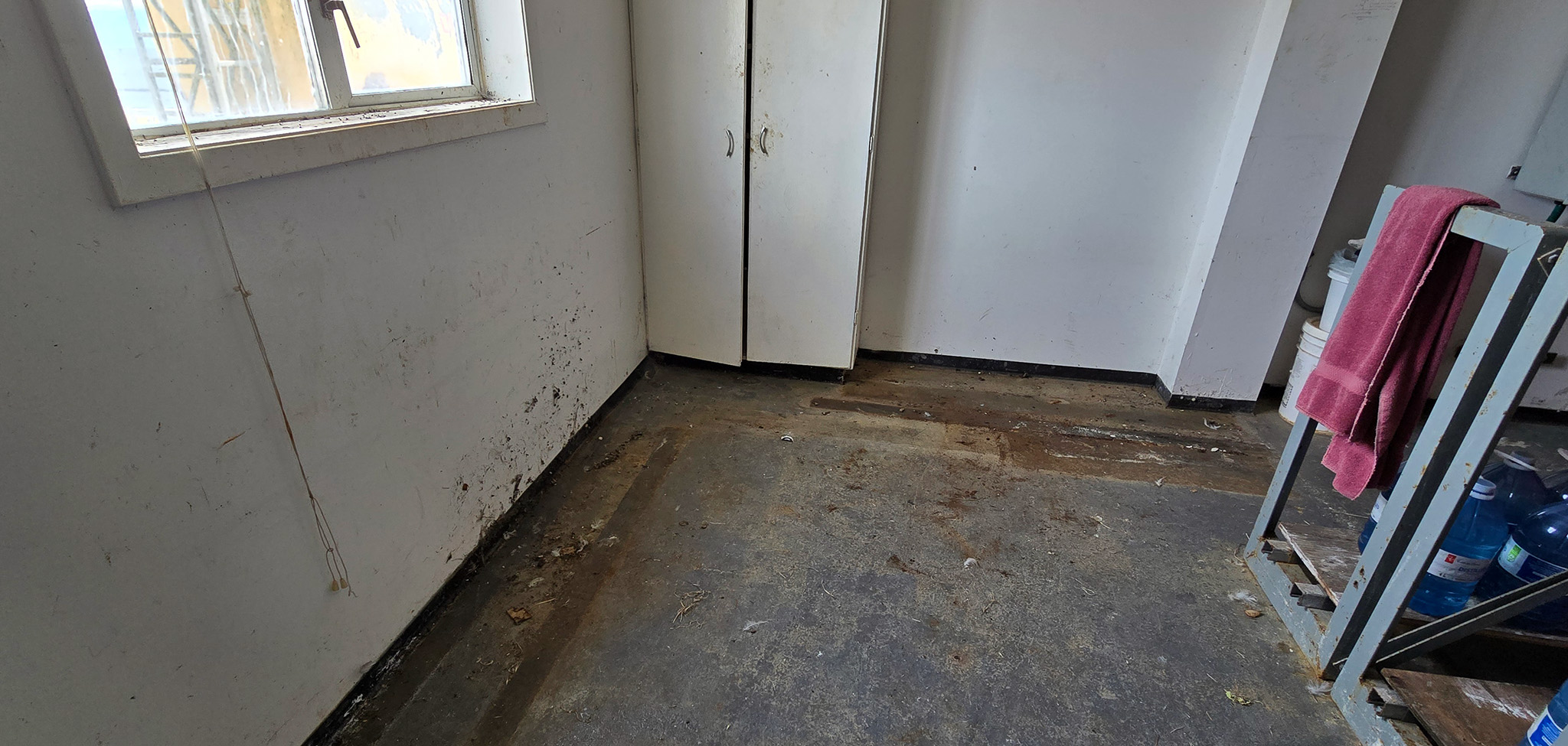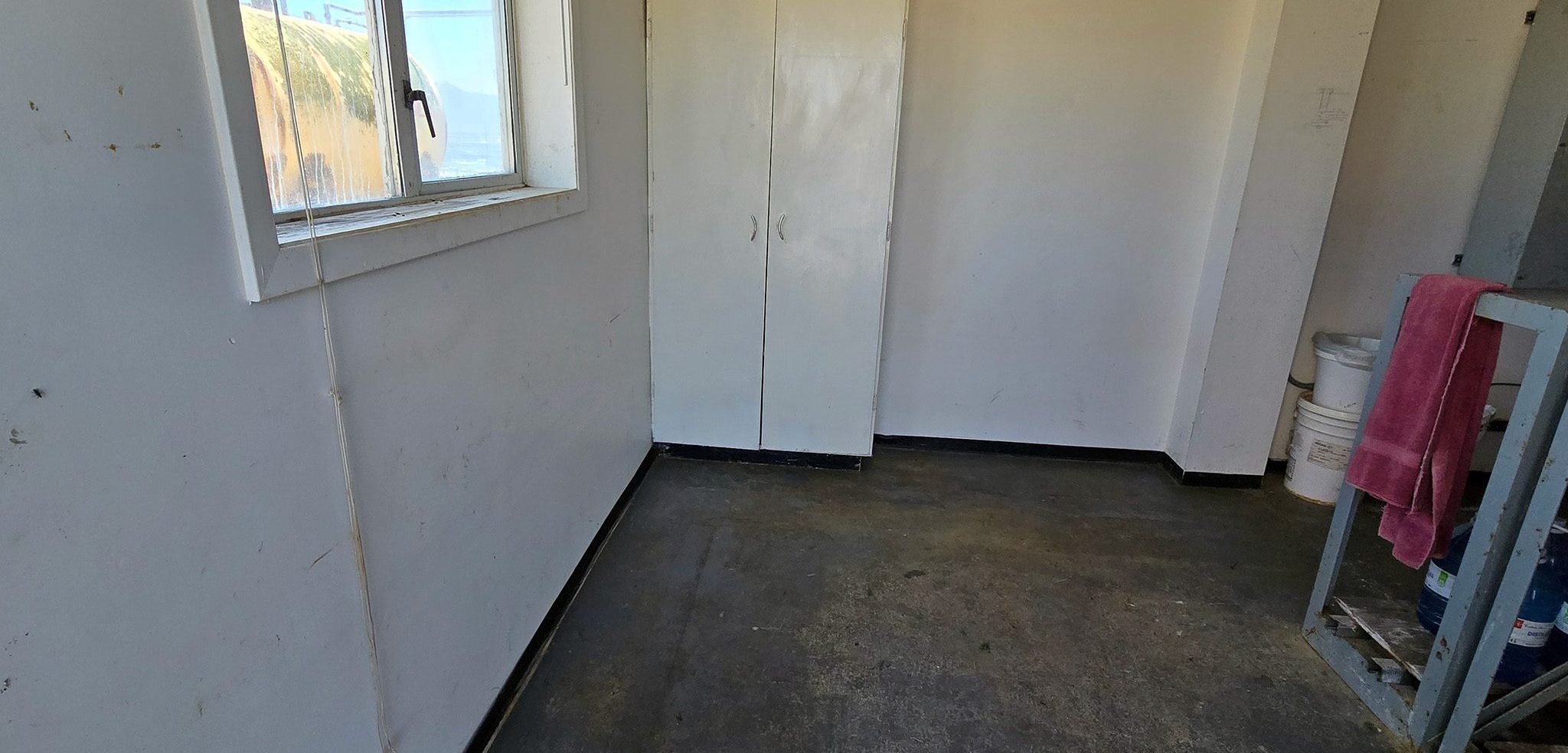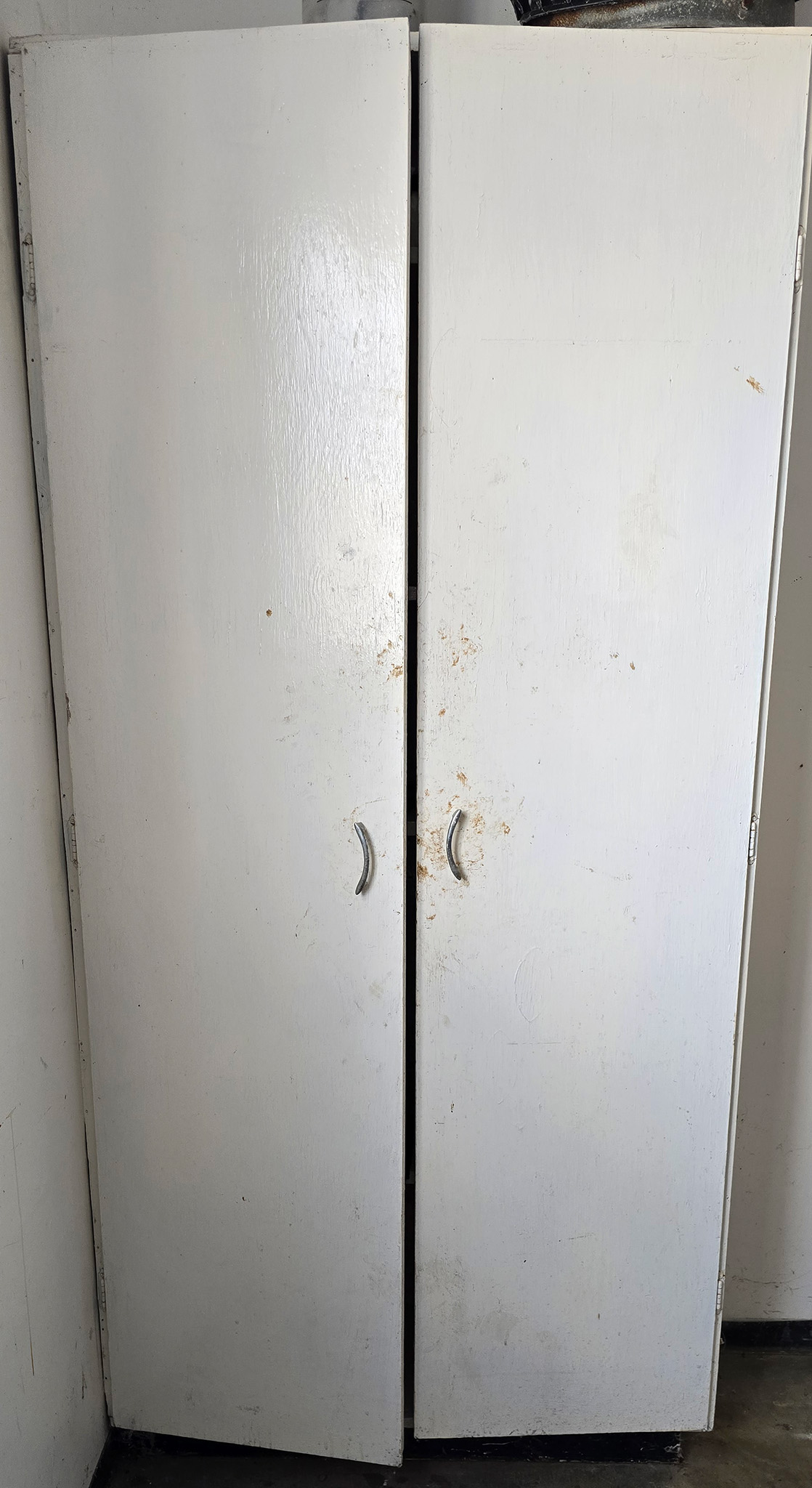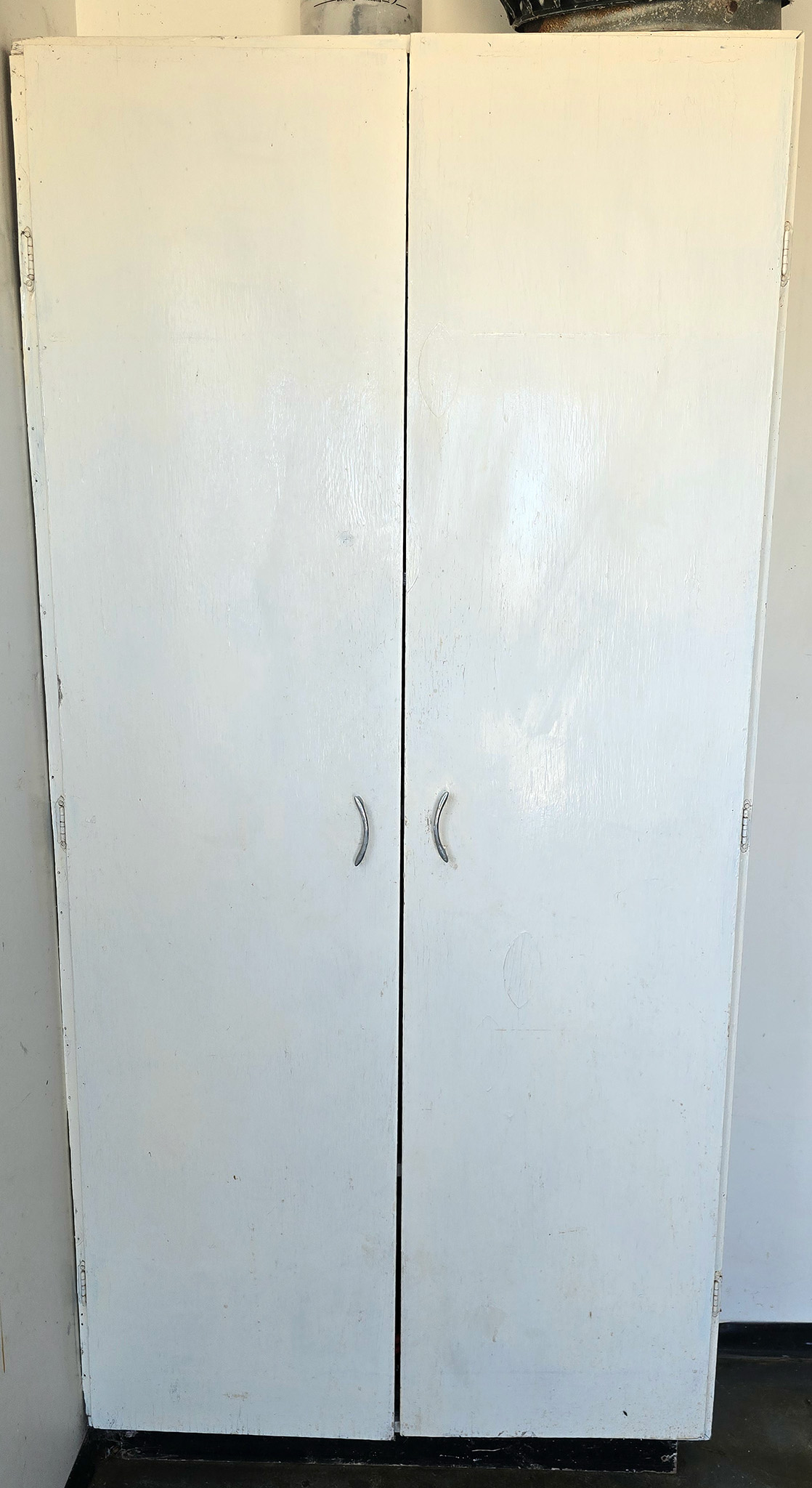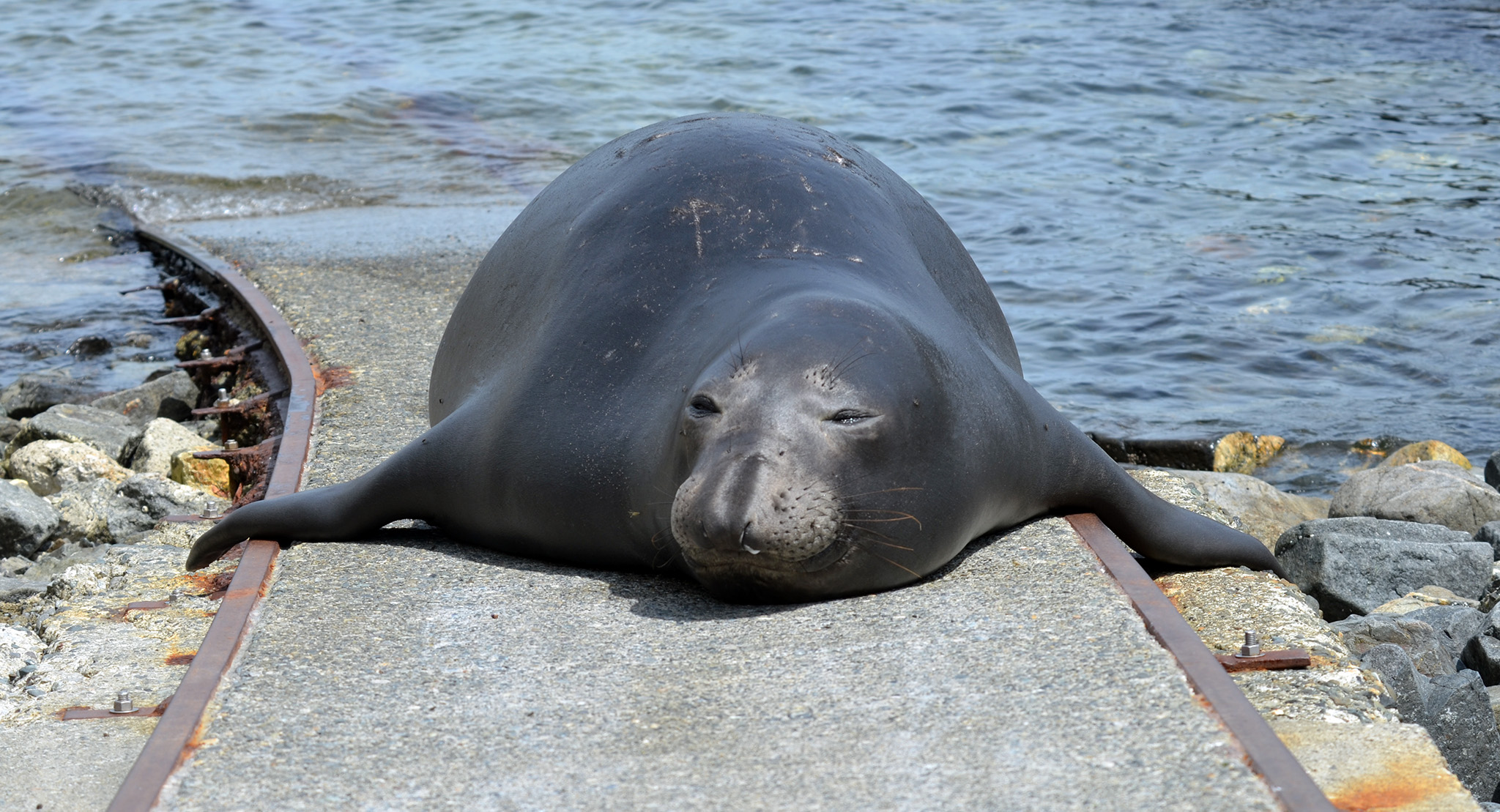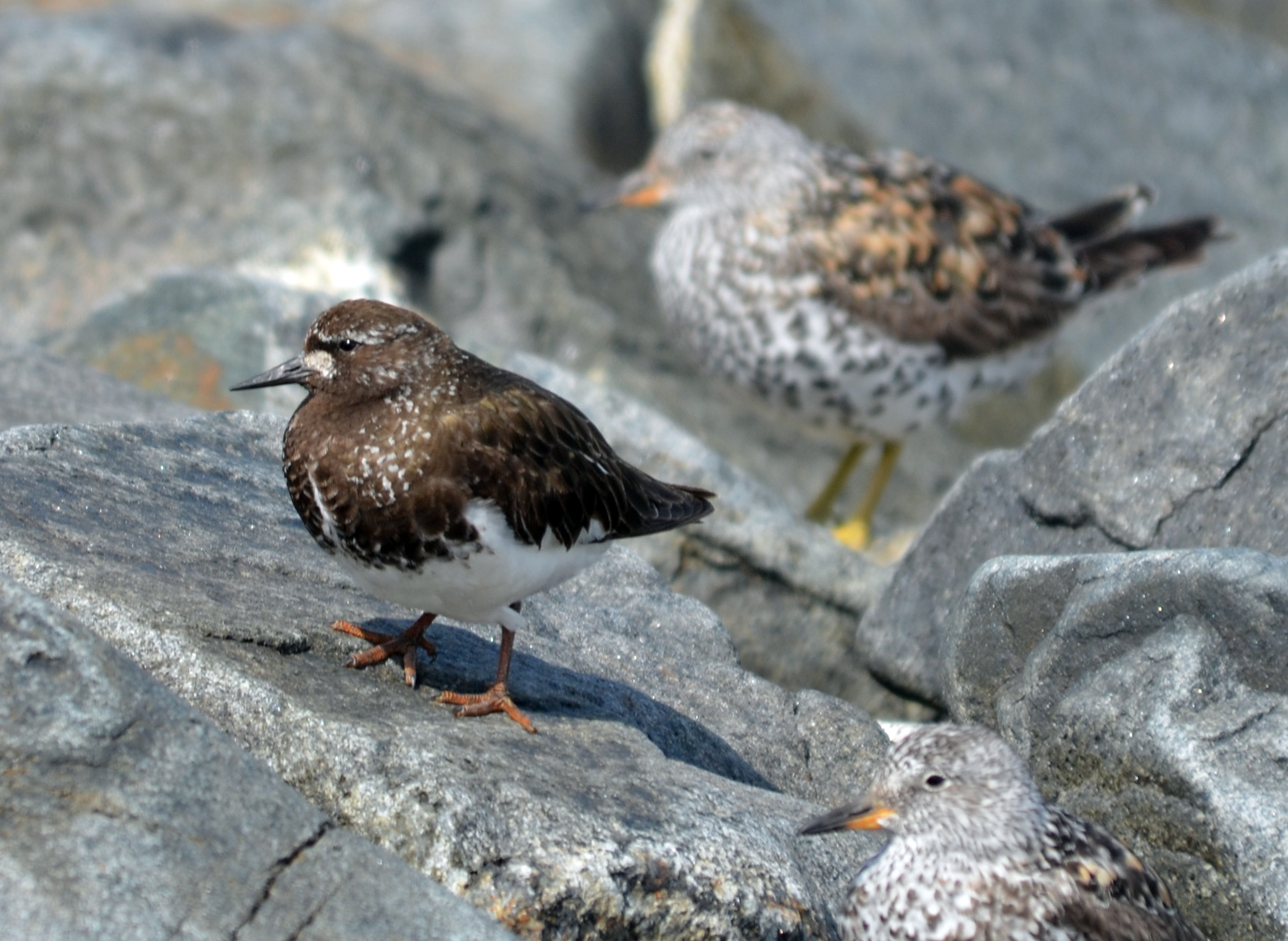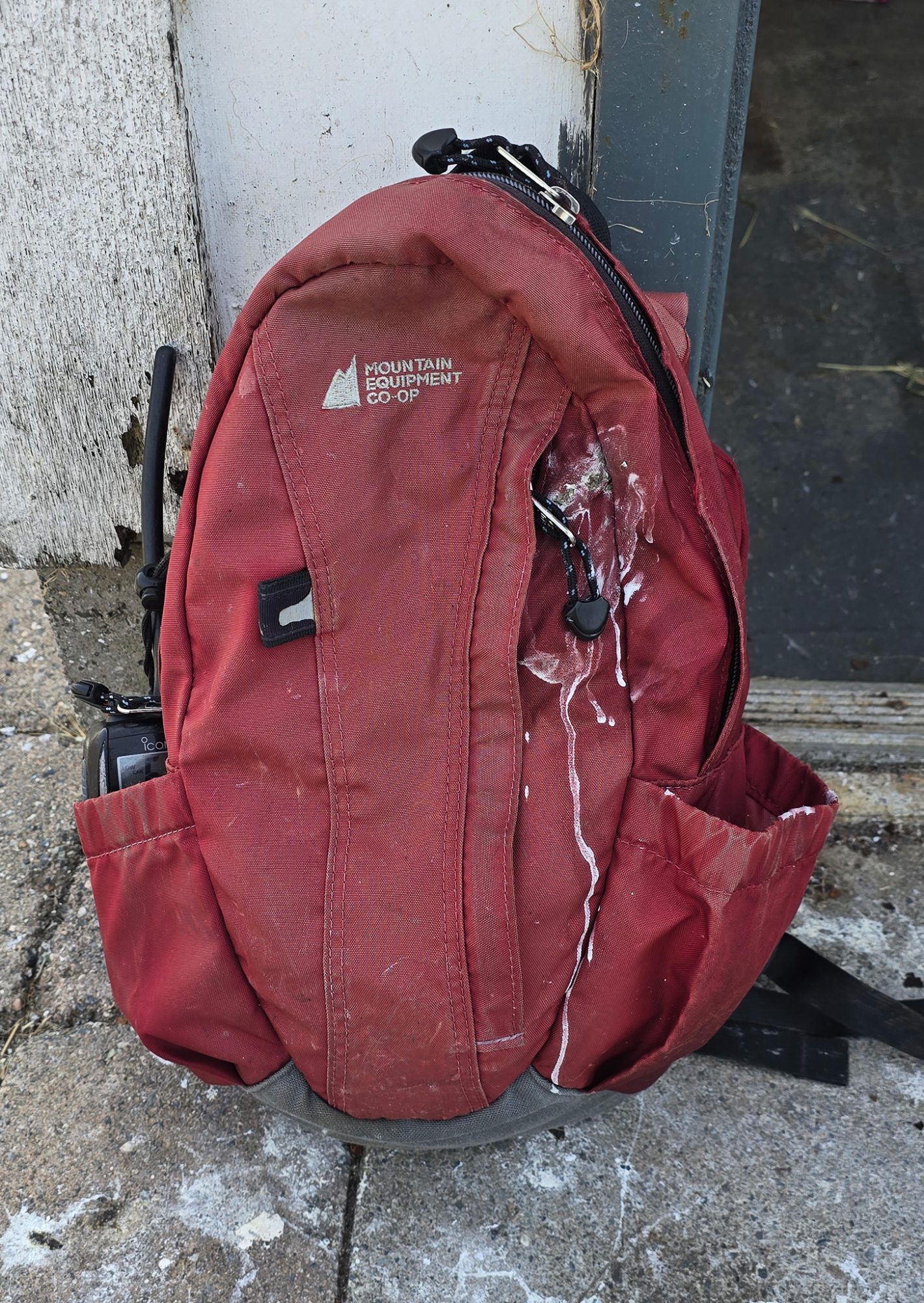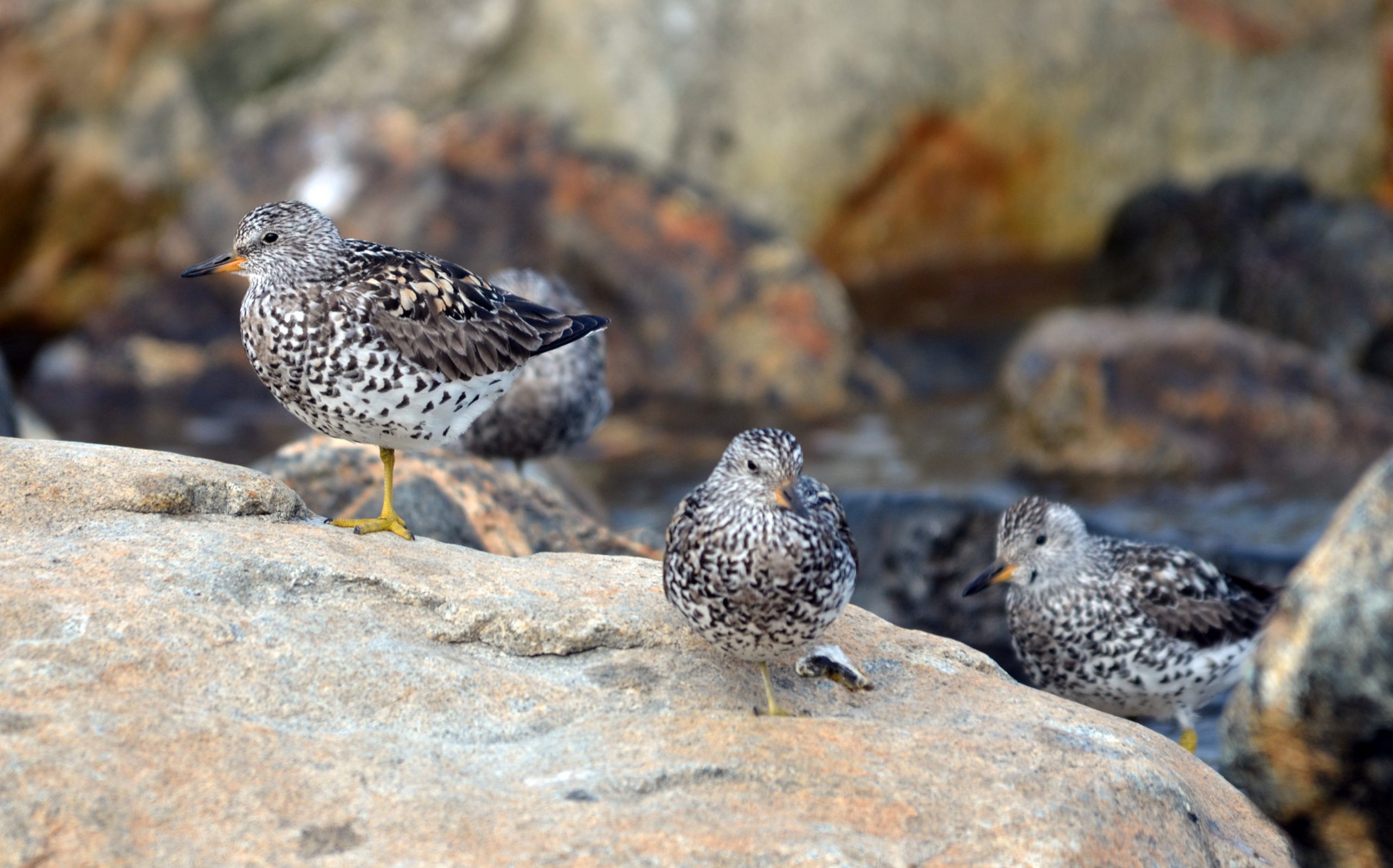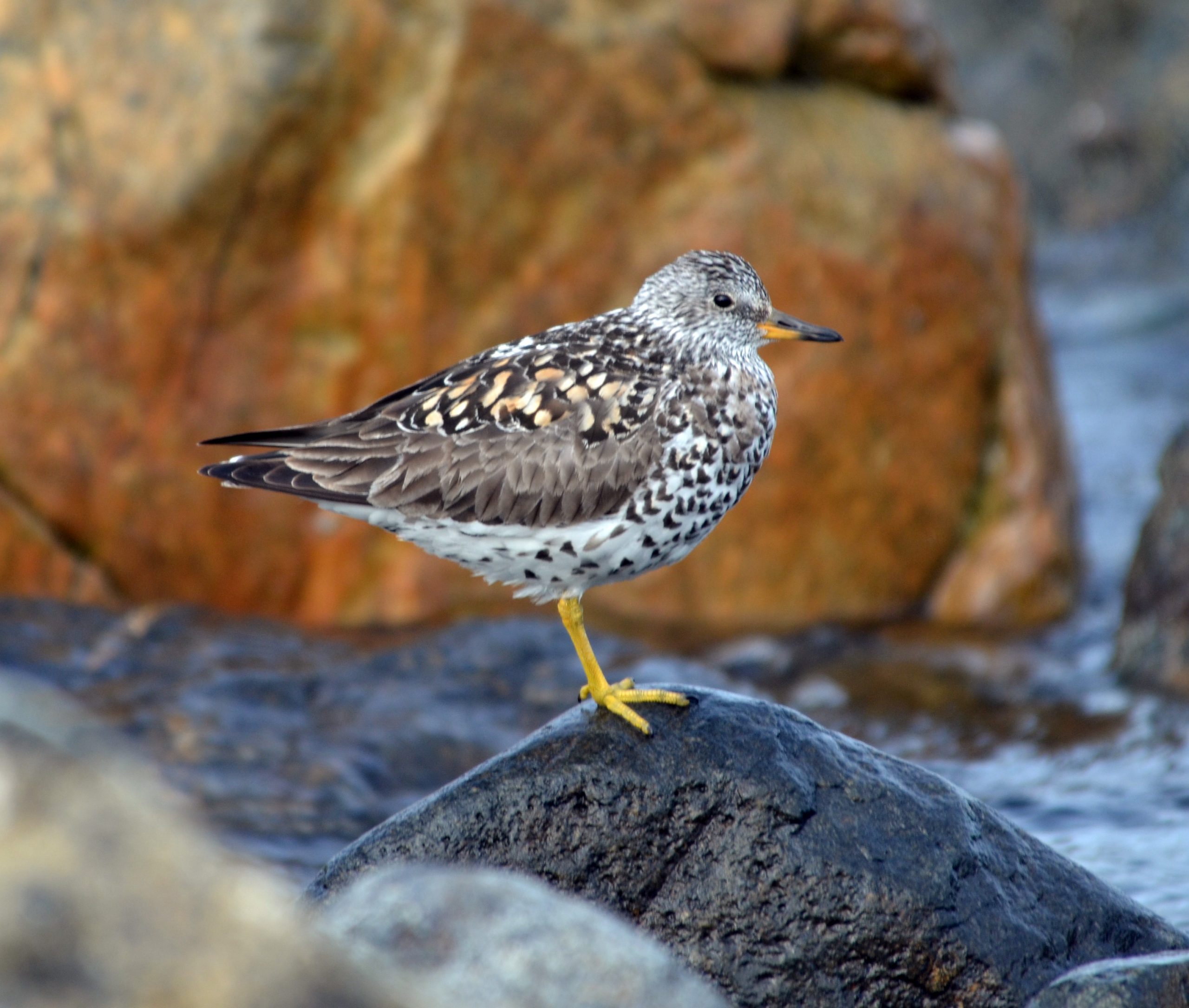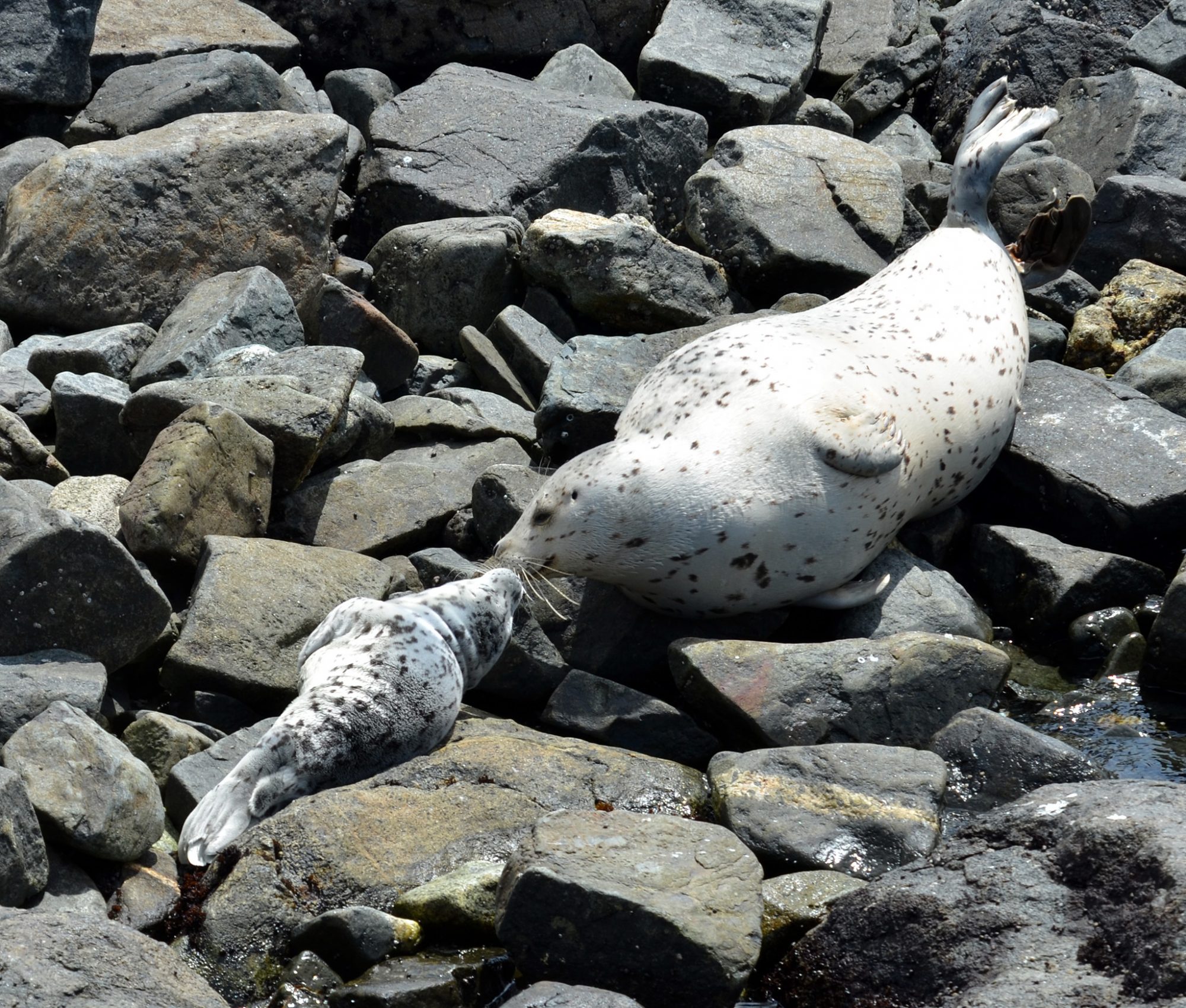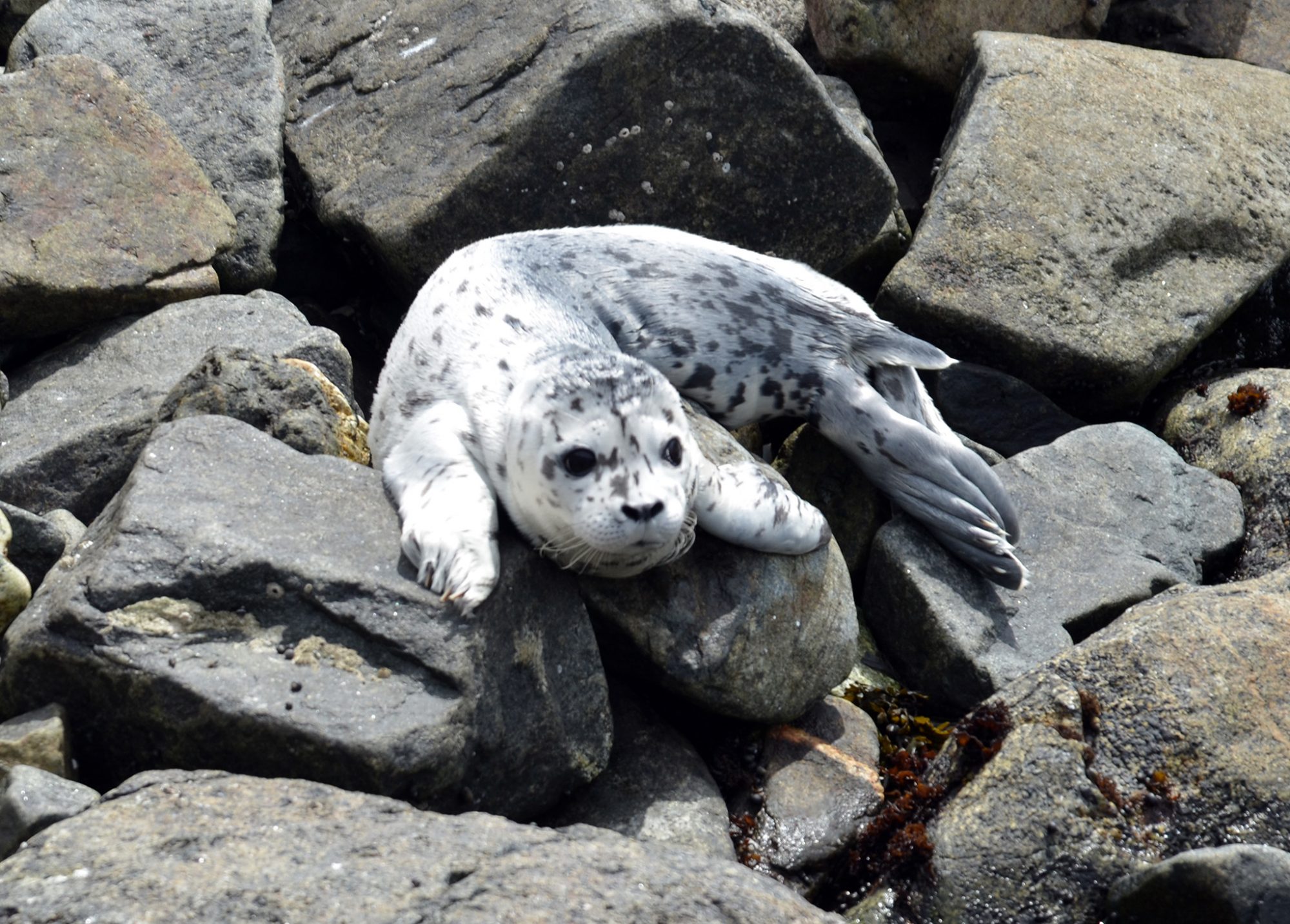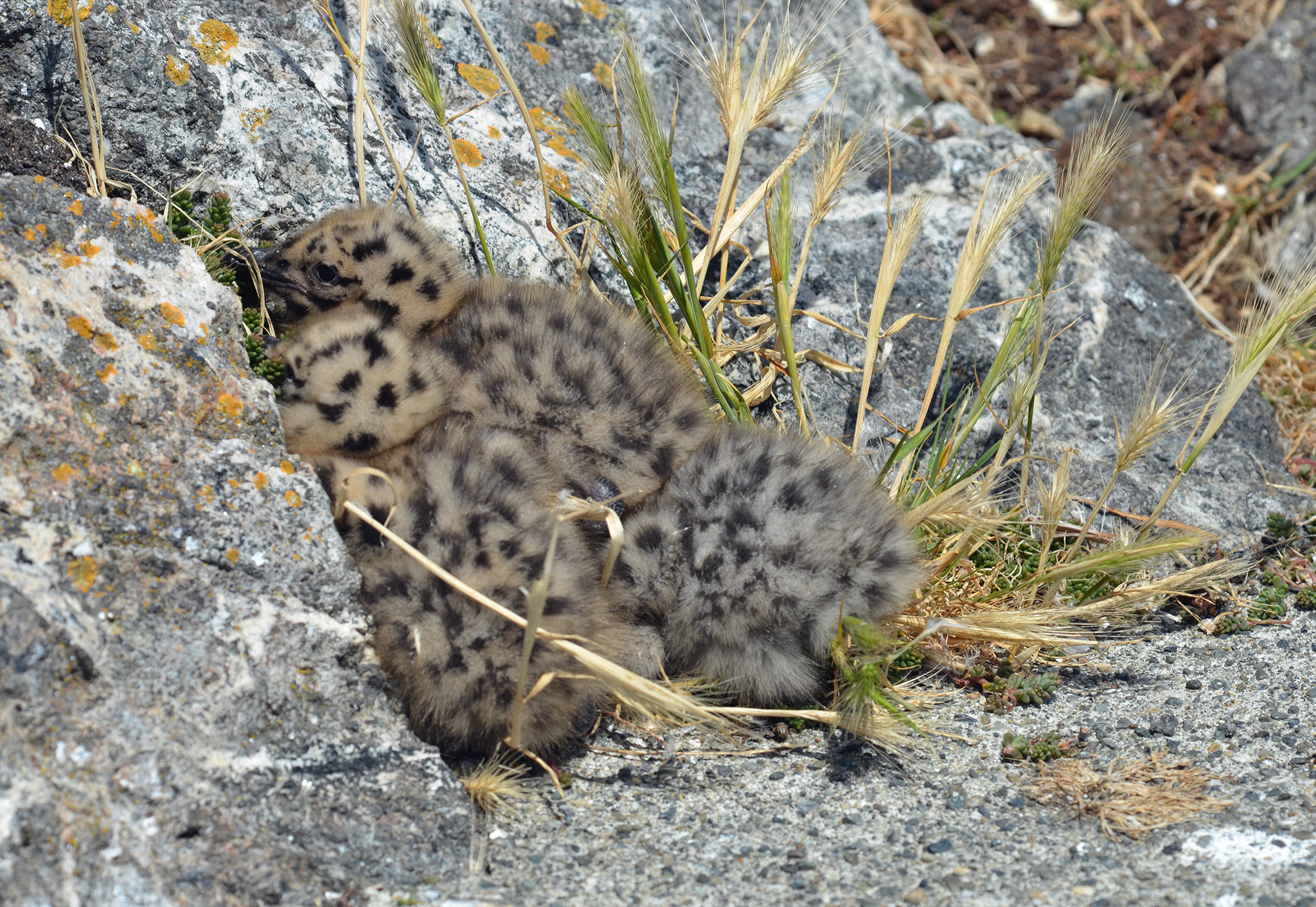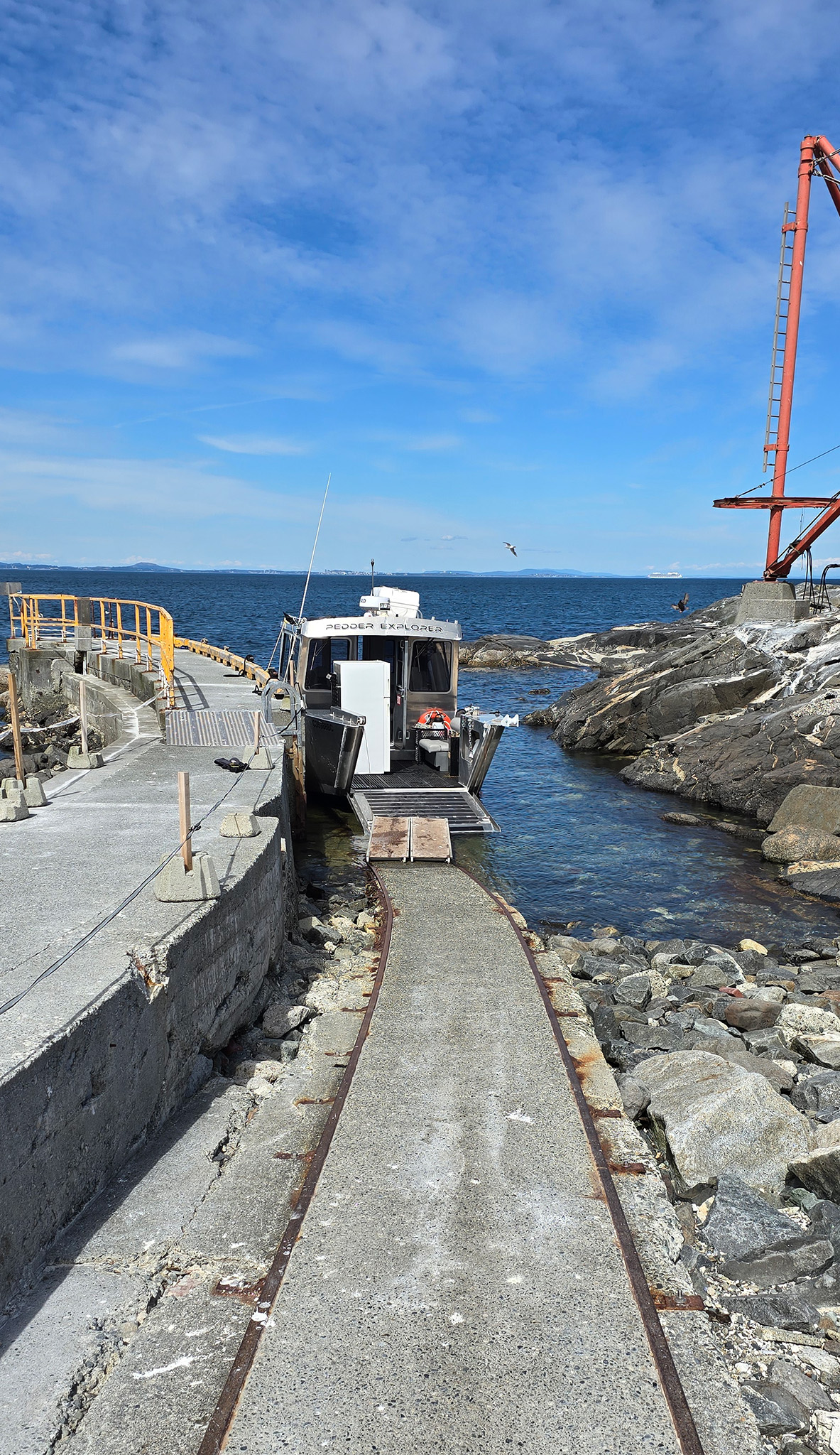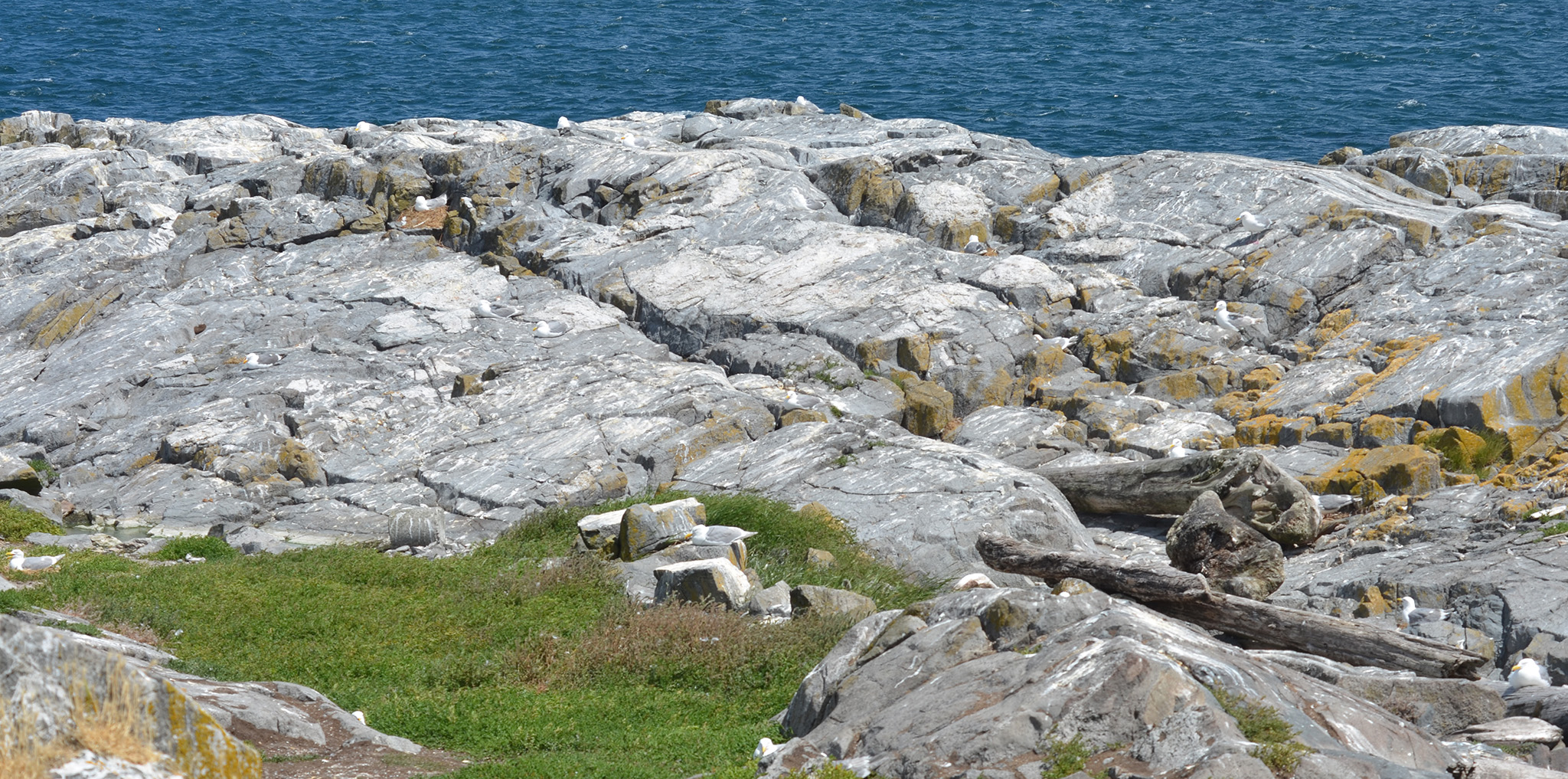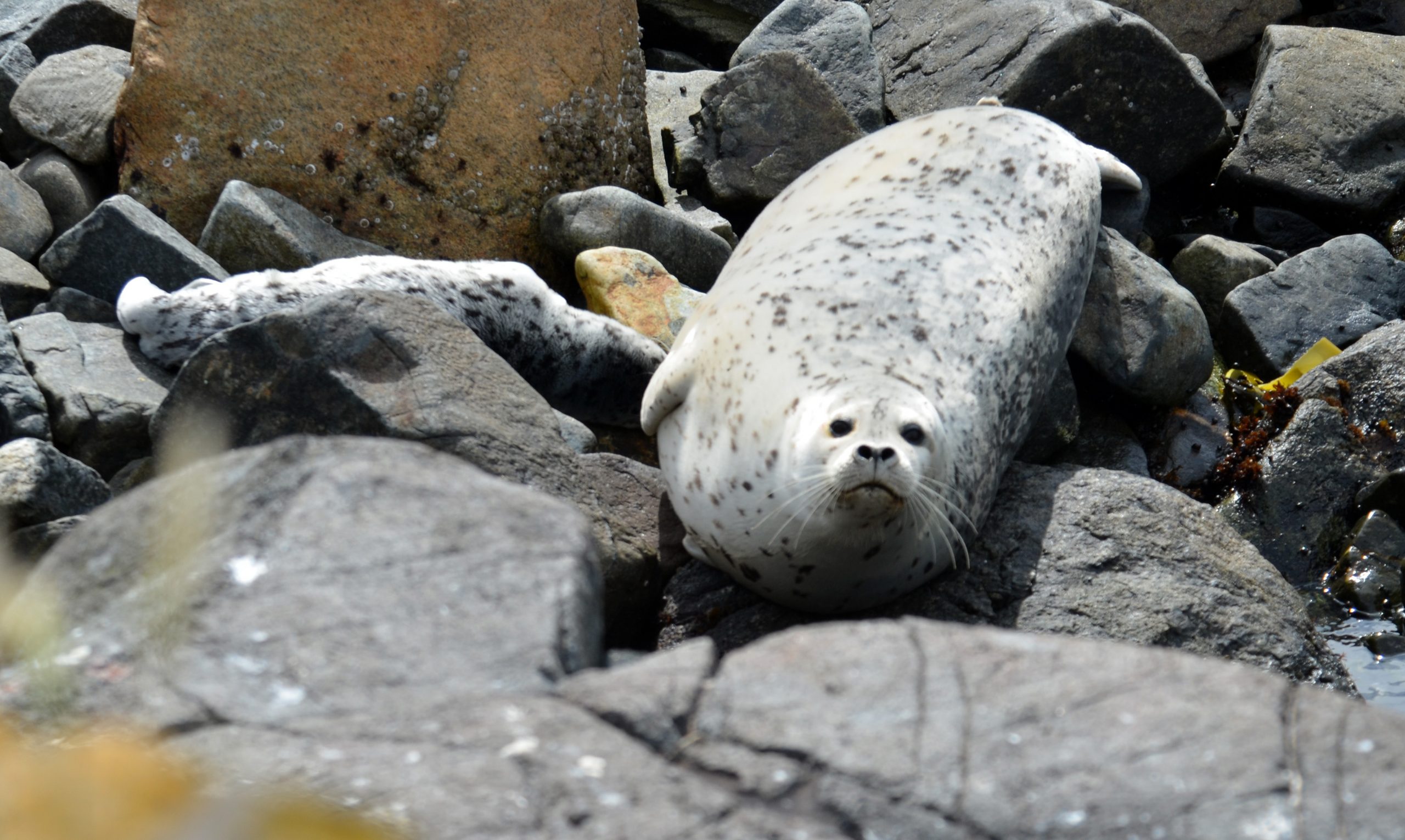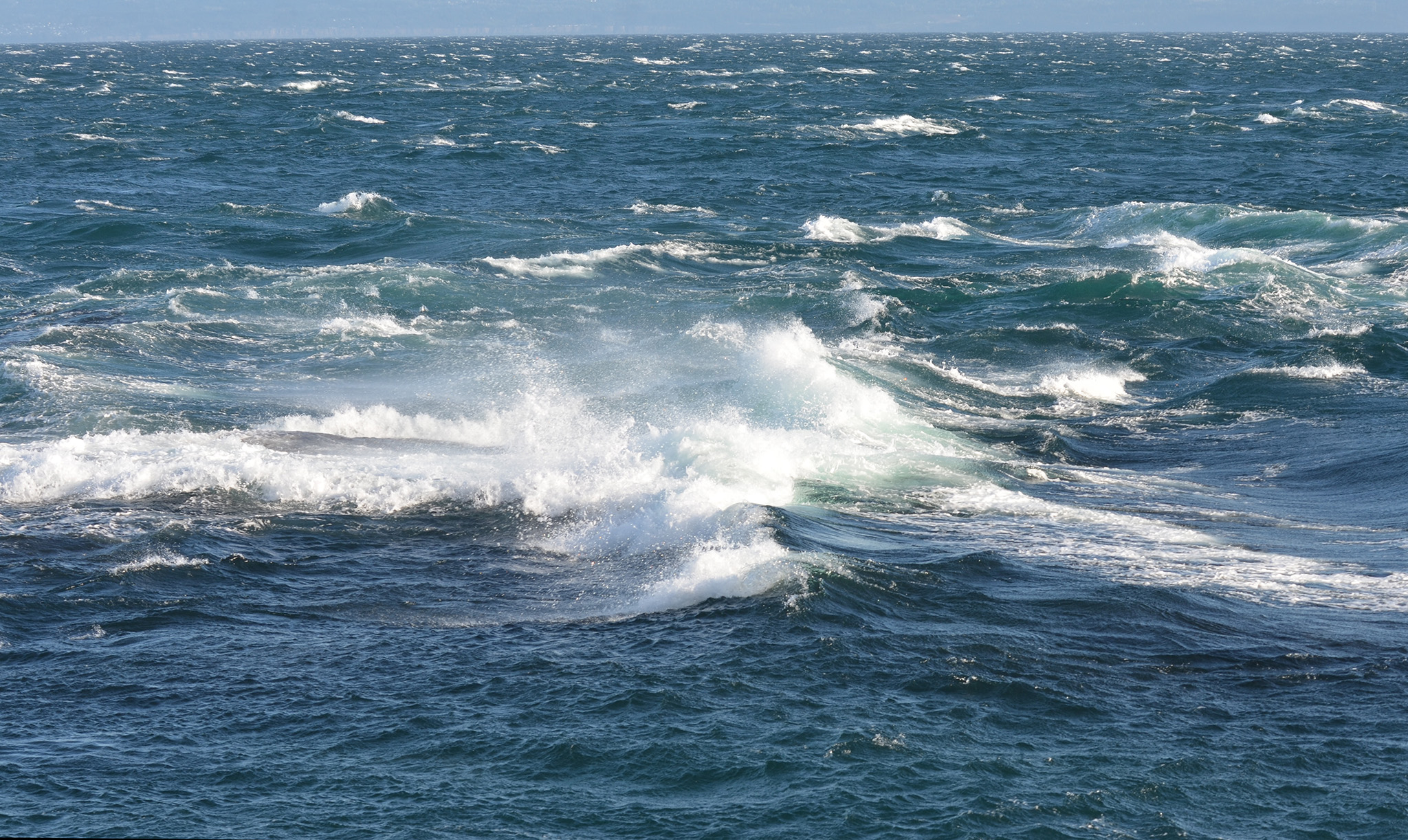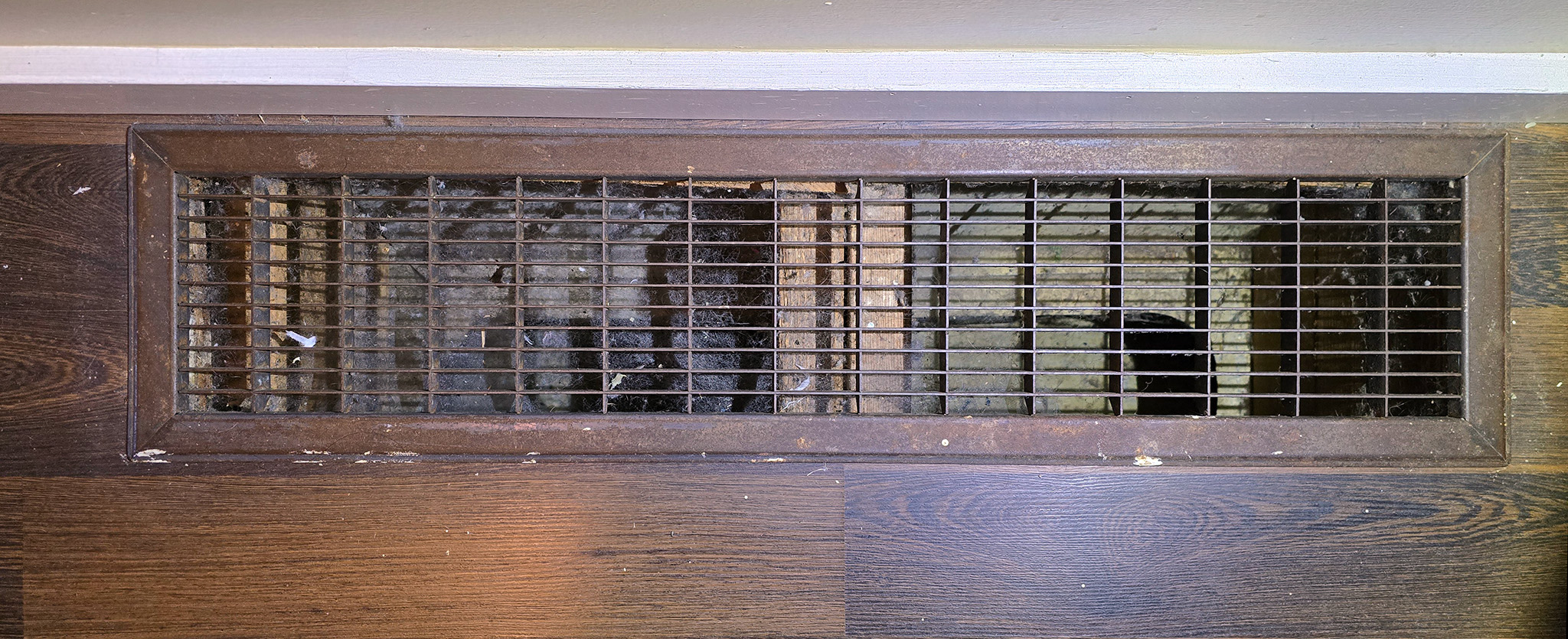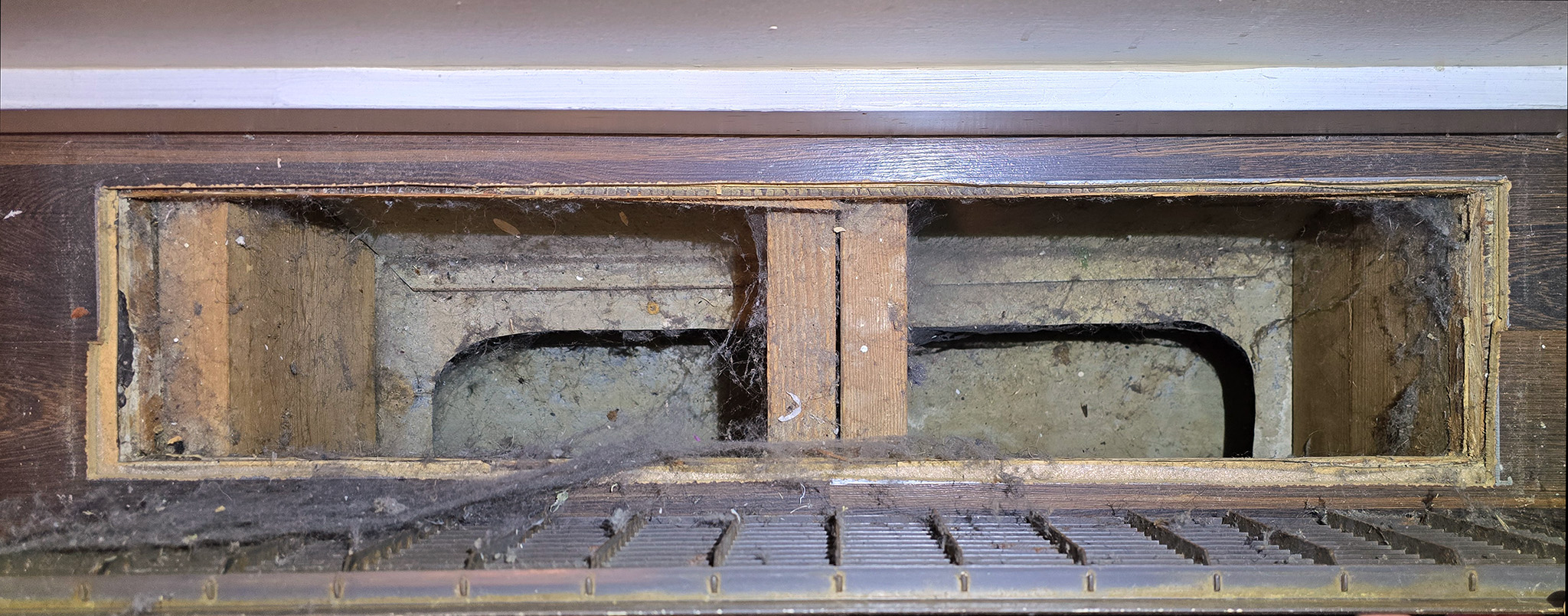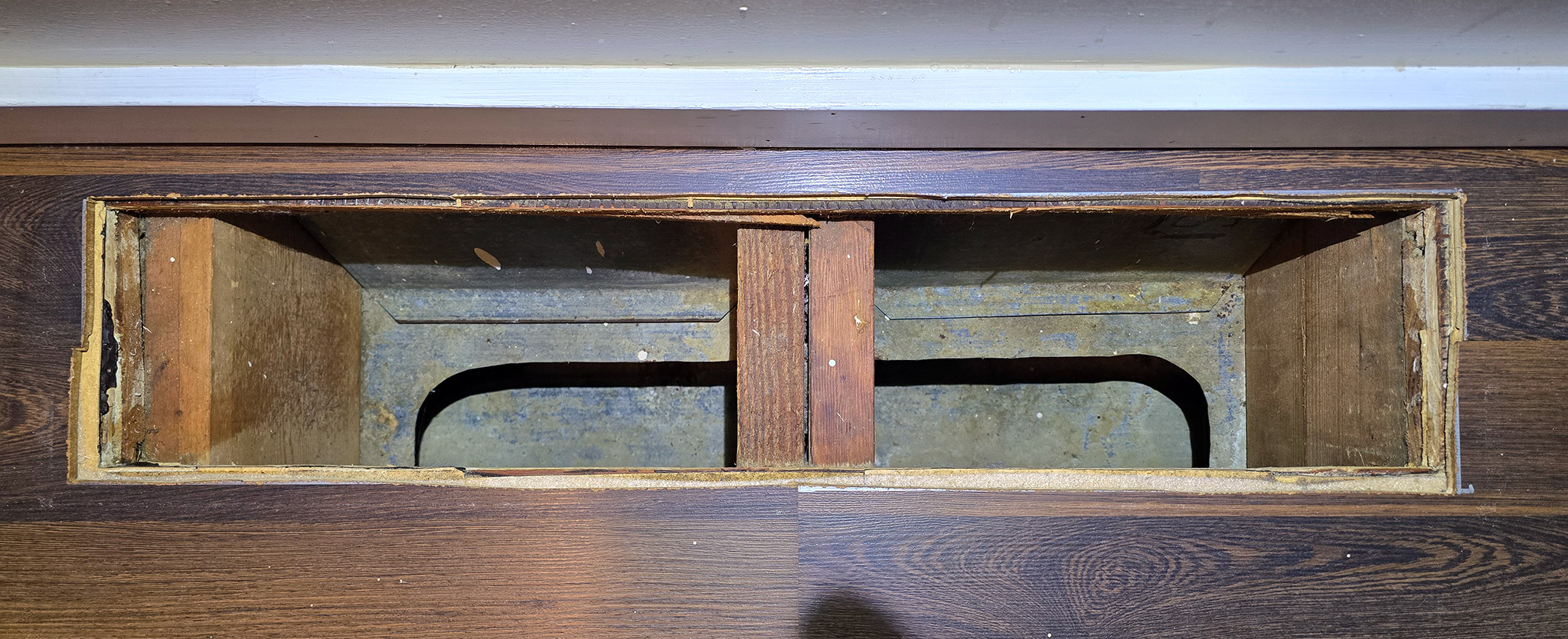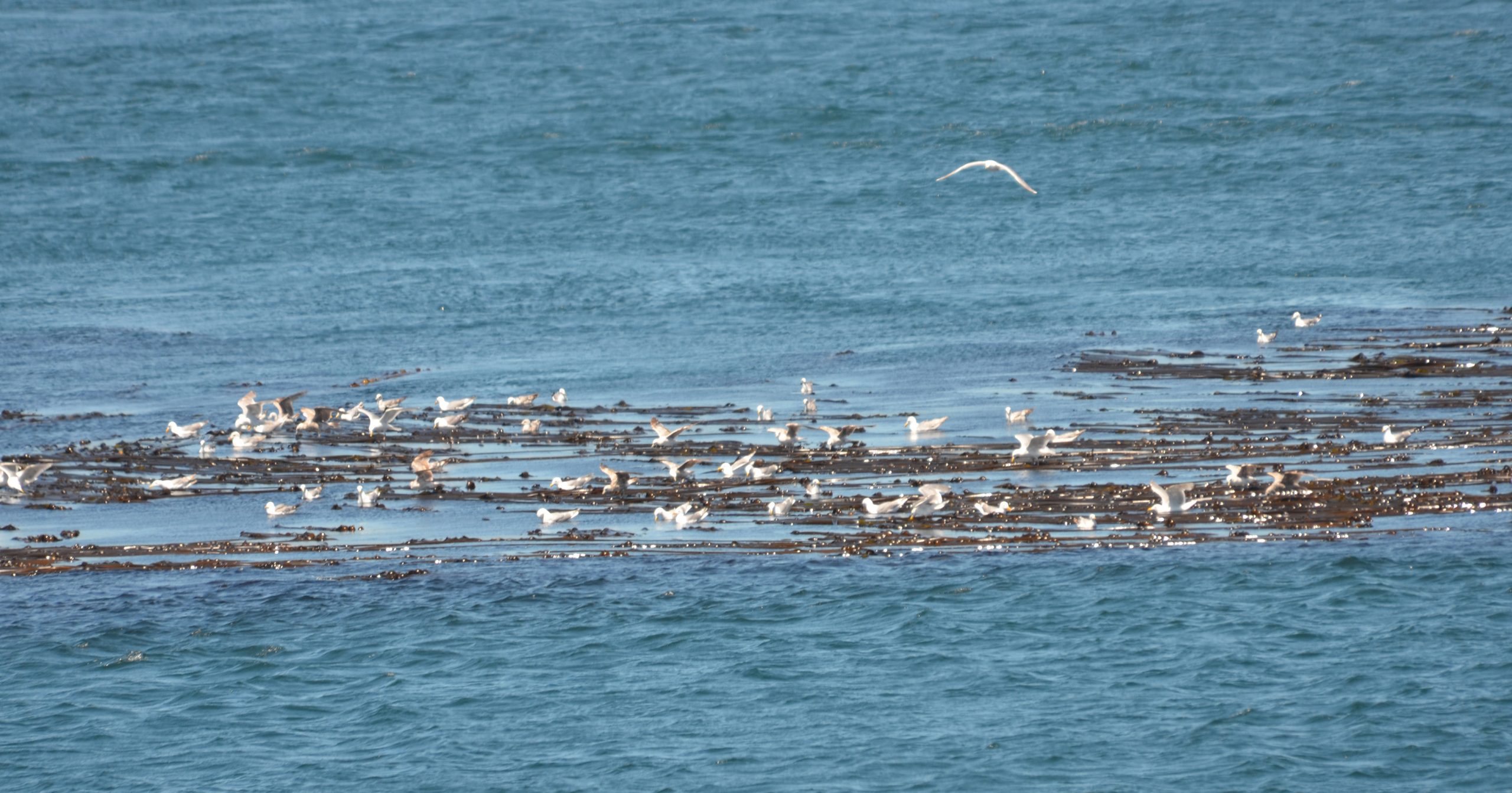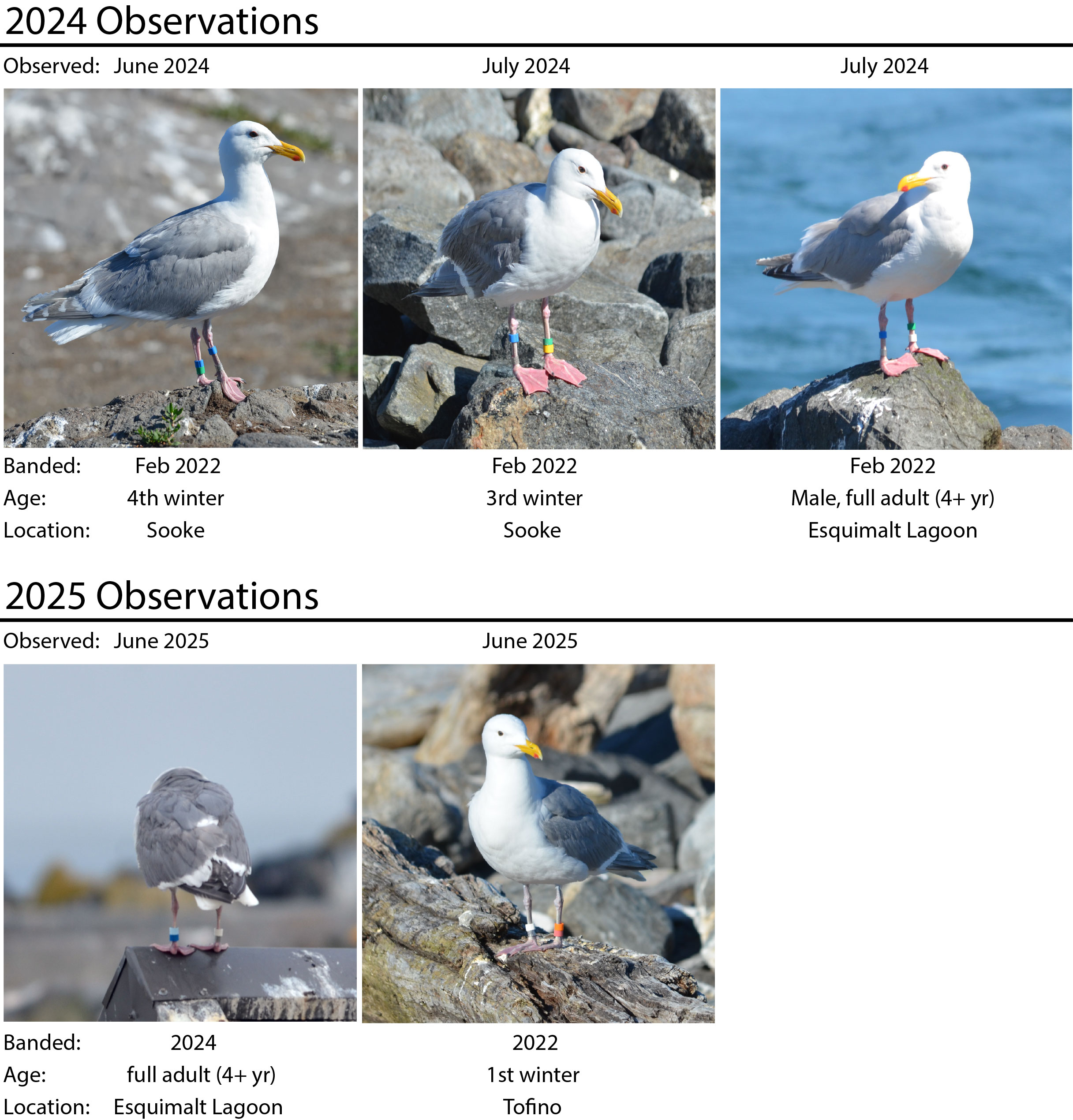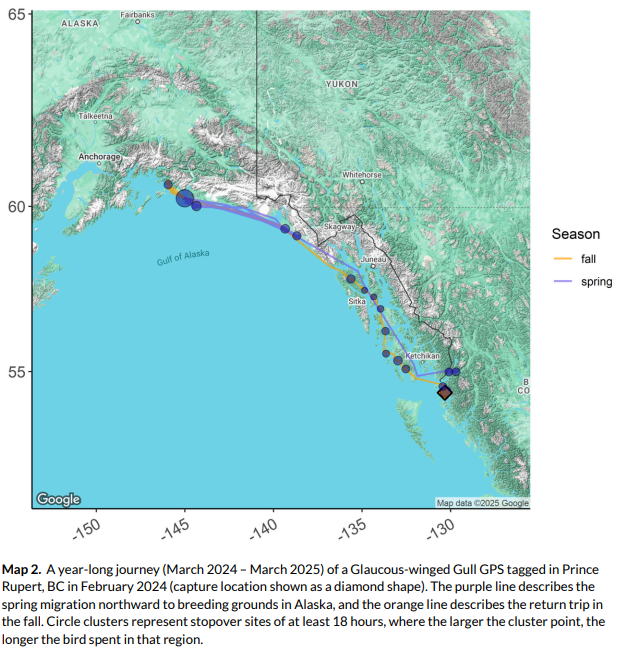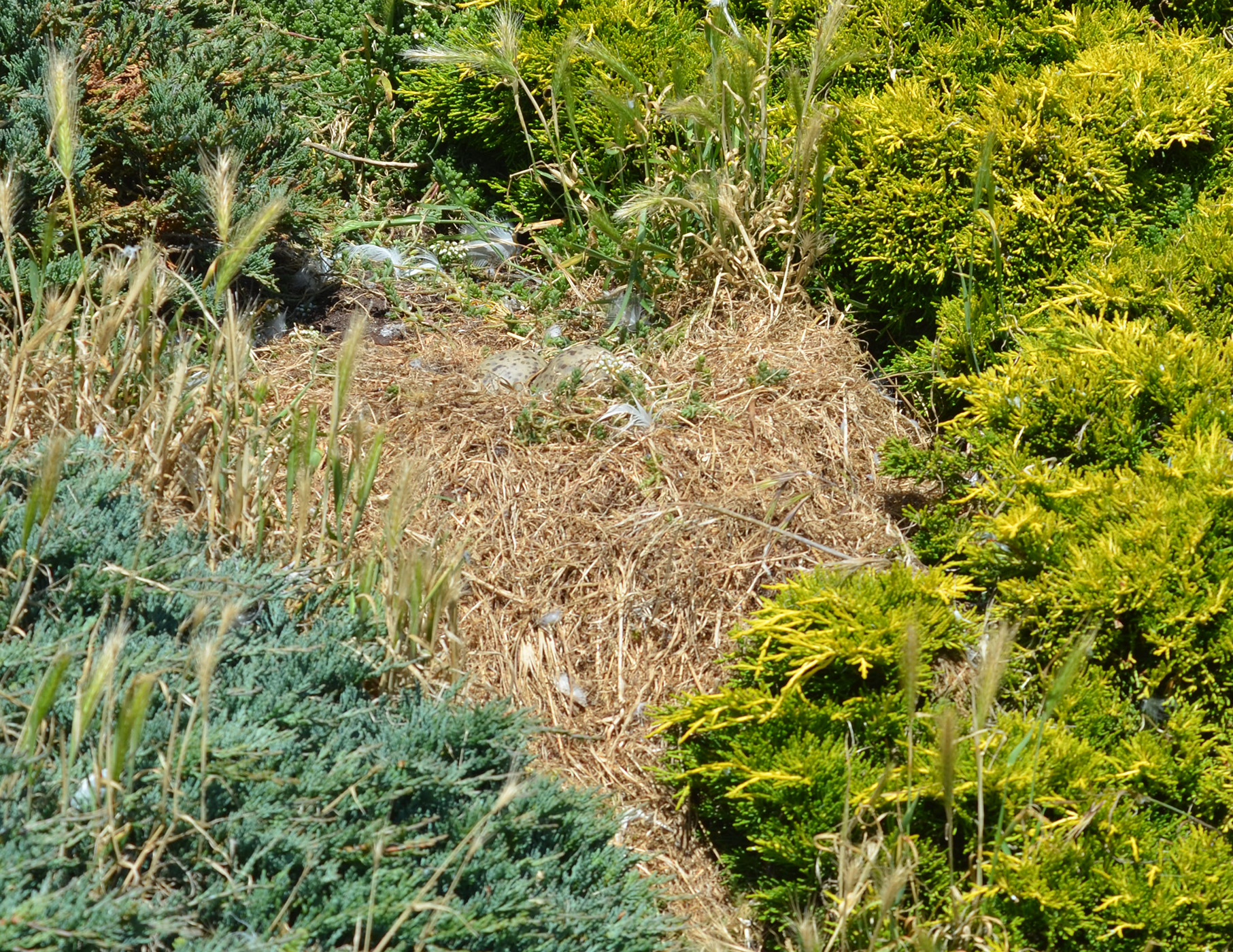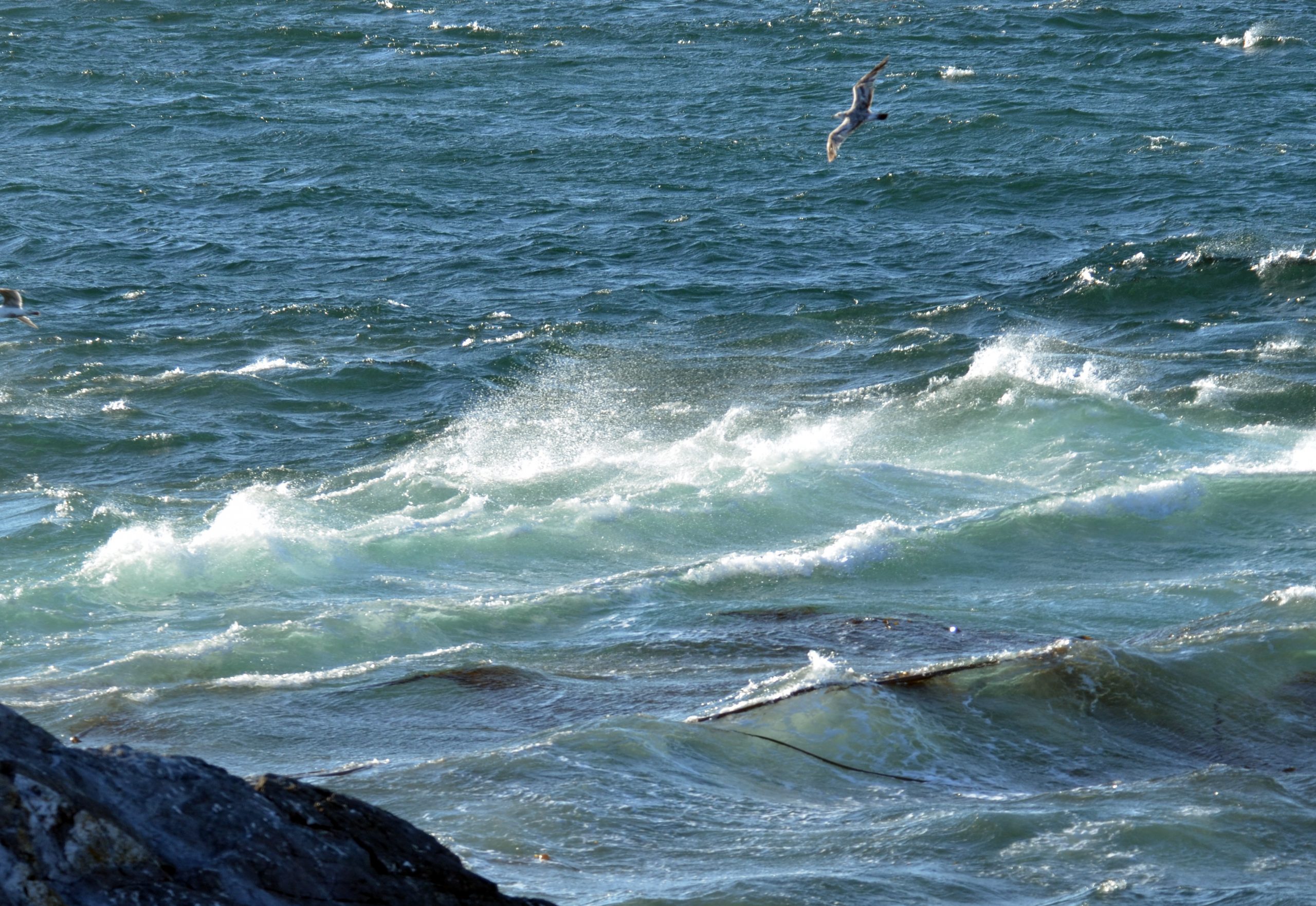Back to the sea
The female elephant seal headed back to the sea yesterday. She arrived on May 18, spent 18 days preparing for her molt, started her molt on June 4, spent two weeks shedding her skin and hair, and another 18 days preparing for her departure. In the final day she had larger amounts of the white froth around her nose and mouth. One land they are cute and clumsy but at sea they are masters (see June 25 2024 to read about their talents and the white froth).
- Arrival on May 18th
- Halfway through her molt
- Last photographed July 5th
I came across the first obvious dead seagull of the summer. I was preparing myself for this but I was surprised by the location. The Window gulls had a protected spot more than 12 feet from another nest, bordered by the wall of the Tank Shed and with walkways on the sides. She had two chicks that hatched two days apart and one egg still in the nest. I couldn’t spot the smaller chick and hope she hadn’t lost that one as well. I wonder if it is retribution for last years activities?
- Window Gull in the triangle of protection.
- Window Gull’s dead chick
Here are some uplifting photos of happy healthy chicks enjoying the day.
Facility work
- cleaned solar panels
- topped up battery fluids
Vessels
- Ecotourism: 10
- Private: 2
Weather
Varying amounts of fog throughout the day. Strong westerly breeze until early evening, then gale force with winds of 36 knots. Daytime temperatures: low 10, high 12.
Birds on the beach
Wildlife notes
The rocky beach on the eastern shore is popular with the shorebirds which starting arriving this week. Surfbirds, black turnstones and western sandpipers are present and today a short-billed dowitcher arrived. There is another little yellow-legged bird flittering about but I haven’t been able to get a good look at it or a photo.
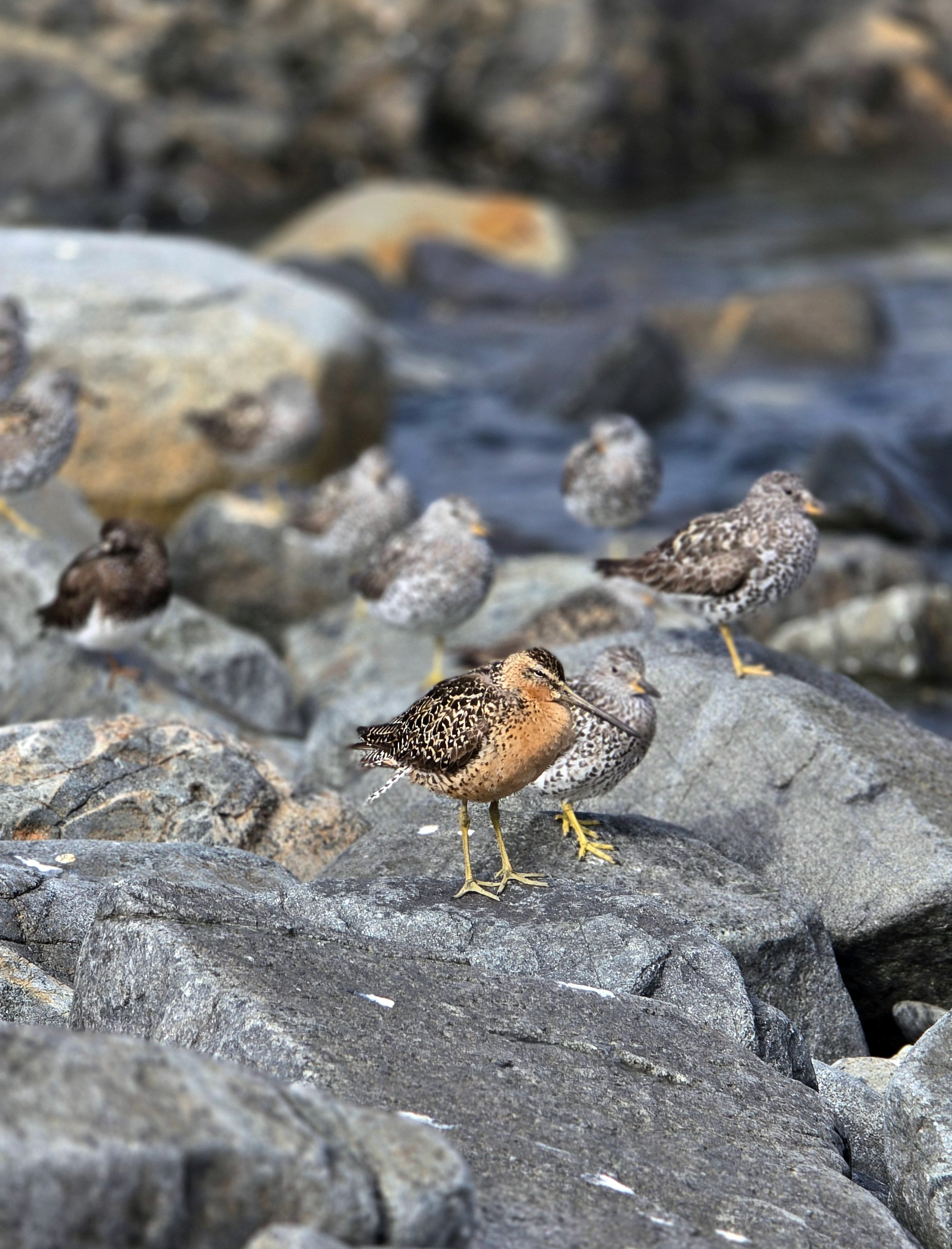
A short-billed dowitcher in the foreground with surfbirds and a black turnstone. I had to scoot along on my tush creeping slowly closer to get this photo with my cell phone as our big camera is having focusing issues.
Facility work
- cleaned the solar panels
- cleaned the battery room
The old batteries were removed the Battery Room so I scrubbed the floors where they sat for years, and the walls and cupboard doors in preparation for the new table for our instruments and supplies (battery filler bottle, pipettes, specific gravity sampler and data sheets, spray bottle, water, paper towels etc.). When the table arrives, I’ll wipe out the inside of the cupboard.
- Before – Corner of the battery room where the old batteries were stored.
- After
- Before – Cupboard doors
- After
Vessels
- Ecotourism: 10
- Private: 4
Weather
Steady fresh westerly breeze, building to a strong breeze in the evening. Skies mostly clear with patches of fog. Daytime temperatures: low 11, high 13.
Harbour seal pup
Wildlife notes
The great excitement of the day was the very young harbour seal pup that was dropped off on the boat ramp. Apparently it is not unheard-of for moms to leave their pubs on docks or beaches and come back for them later. I didn’t know this at time when I spotted it coming down to do the daily sea water readings. It was so tiny, moving little and awkwardly and I saw some red and what at first glance appeared to be its intestine protruding out. There were killer whales here yesterday and my first thought was its mom had been killed and the pub had narrowly escaped. I took photos, called Kendra, learned it was likely an umbilical chord. My next immediate worry was that the elephant seal who was in the water 10m away would steamroll up the ramp and flatten the little thing as they do with gull nests or other objects in their path. We are not allowed to interfere with nature and I couldn’t bear to watch so I left to finish cleaning the solar panels.
When I returned 20 minutes later, the pup was in the water calling for its mother. An adult harbour seal approached also calling and both disappeared from view. A short while later the elephant seal came up the ramp. Ah, all ended well!
- Young harbour seal pup
- Umbilical chord
Facility work
- cleaned the solar panels
- started cleaning the Battery Room
Vessels
- Ecotourism: 12
- Private: 2
Weather
Sun with scattered clouds. WNW winds strong breeze to near gale all day with gusts up to 36. Daytime temperatures: low 11, high 16.
July 4 Census
Mammals:
- Steller sea lion: 1
- California sea lion: 0
- Harbour seal: 54 adults, one pup (June 27: 258)
- Elephant seal: 1 female
- Killer whale: 2
Birds:
- Gulls: 514
- Pigeon guillemot: 163
- Cormorants: 13
- Bald eagle: 3
- Black oystercatcher: 14 adults (only saw 4 chicks today)
- Harlequin duck:1
- Surfbird: 11
- Black turnstone: 6
- Western sandpiper: 4
Wildlife observed this week but not on census day was barn swallows and one hummingbird. The Keepers House oyster catchers have moved their two very small chicks down to the west side of the East Beach. The East Beach oystercatchers are on the east side and about 3/4 the size of their parents. There are so many more gull chicks that have hatched putting the gulls on high alert. I was hit twice on my knapsack, and once on my shoulders. It is not possible this time of year to stretch out laundry to very 3 weeks. I am glad to have my helmet and am developing an uncanny sense of when to duck or swivel.
Facility work
- cleaned solar panels
- cleaned Keeper’s House outside windows
Vessels
- Ecotourism: 14
- Private: 3
Weather
Patches of fog in the morning then scattered clouds. Fresh westerly breeze until 4pm, gale force by early evening. Daytime temperatures: low 10, high 14.
The first surfbirds
Wildlife notes
Six surfbirds visited east beach today. They are returning from their breeding grounds in Alaska and the Yukon, still dressed in their breeding plumage. They nest inland in the tundra and spend their winters very close to shore. Their non-breeding range is the narrowest and longest of any North American bird, spanning two continents, almost from tip to tip (see their range map).
The harbour seal and her pub continue to spend time on the rocks by the Energy Building. The mother is incredibly attentive and aware of any unusual movements or sounds, just as alert as the oystercatchers.
And finally, the gull chicks. They are also incredibly cute and harmless but their parents are fierce. The Sign gulls have moved their chicks off the rock and onto the walkway. I need to use the walkways here. Stepping off them is not always an option so there was much protest from all involved, except from the chicks which just freeze in the smallest crack or rock that will cast a shadow.
Facility work
- cleaned solar panels
- cleaned the Jetty camera
- topped up battery fluids
Vessels
- Ecotourism: 21
- Private: 1
Weather
Moderate WNW breeze throughout the day, strong breeze in the evening. Skies scattered clouds, clear by evening. Daytime temperatures: low 11, high 15.
Sun and wind
Wildlife notes
There were periods when the island was quiet and appeared empty with the gulls out feeding. The chicks come out from their cover to feed and surprisingly stand fairly steady in the strong winds. I didn’t see the female elephant seal visit the Jetty today for her soak and there were few instances where all the gulls took to the air. A harbour seal visited the shore with her pup for a while in the morning. I spent most of the day inside cleaning and watching the waves, glad to be on land and not in a small boat taking a beating.
Facility work
- cleaned solar panels
- cleaned furnace vents in the Keeper’s house
- Furnace air intake vent in the hallway floor
- Before
- After
Vessels
- Ecotourism: 0
- Private: 0
Weather
Sunny with scattered clouds. Steady WNW near gale increasing to gale force by early evening reaching 39 knots. Daytime temperature: low 11, high 16.
Happy Canada Day 2025!
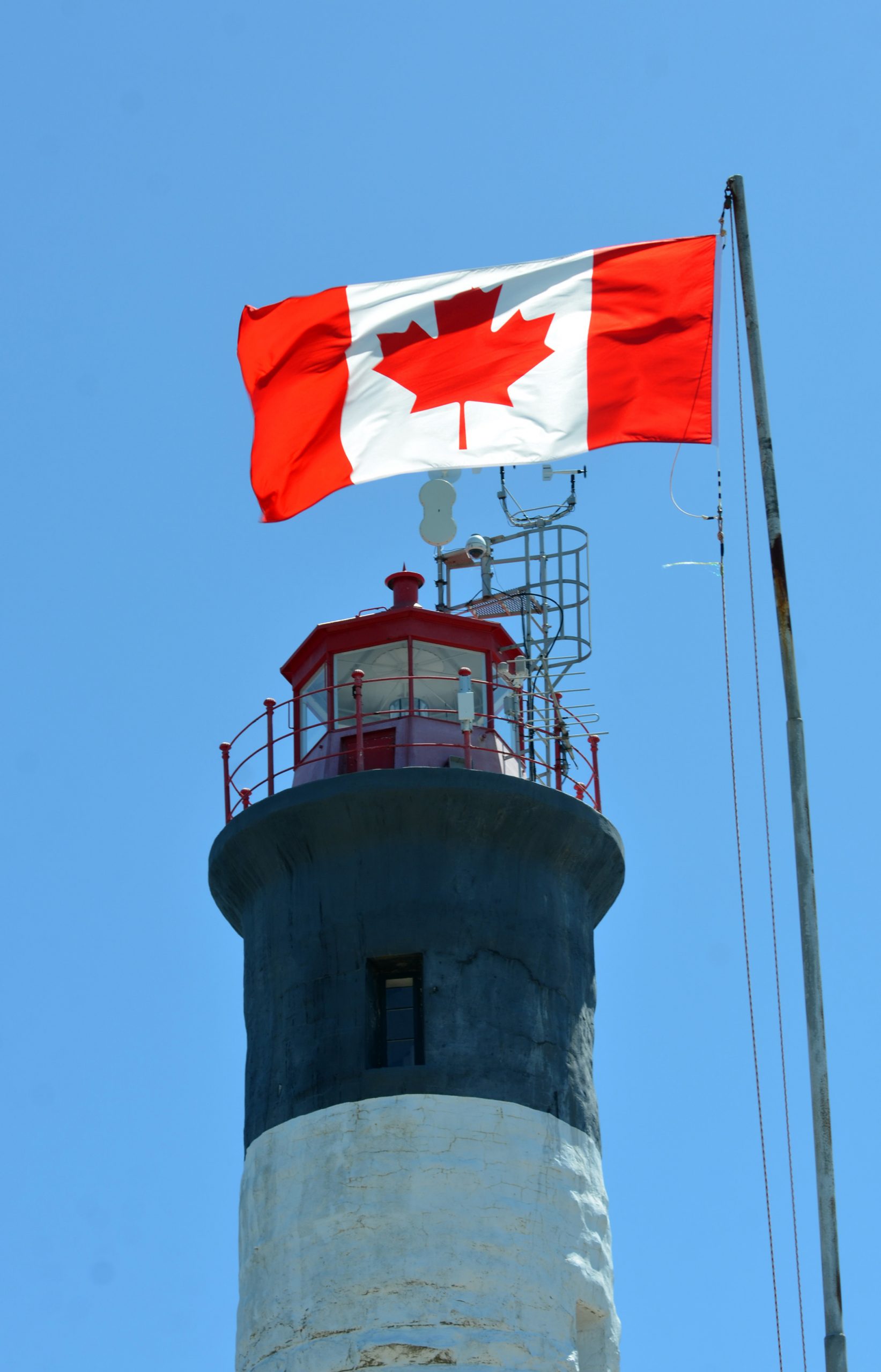
Race Rocks Light House on Canada Day. Just a few hours later the flag was lowered and tied to the pole as the winds reached full gale force by early evening.
Wildlife notes
There must have been a bounty in the kelp beds midday as most of the gulls except those on nests were out there for a feast. They gathered in the kelp beds on the north and north east side but not the others.
Facility work
- cleaned the solar panels
- worked on the month end report
Vessels
- Ecotourism: 6
- Private: 3
Weather
Clear skies with periods of fog. Moderate WSW and W breeze until early afternoon. Winds building to a strong W gale with winds gusting to 46 knots in early evening. Daytime temperatures: low 10, high 11.
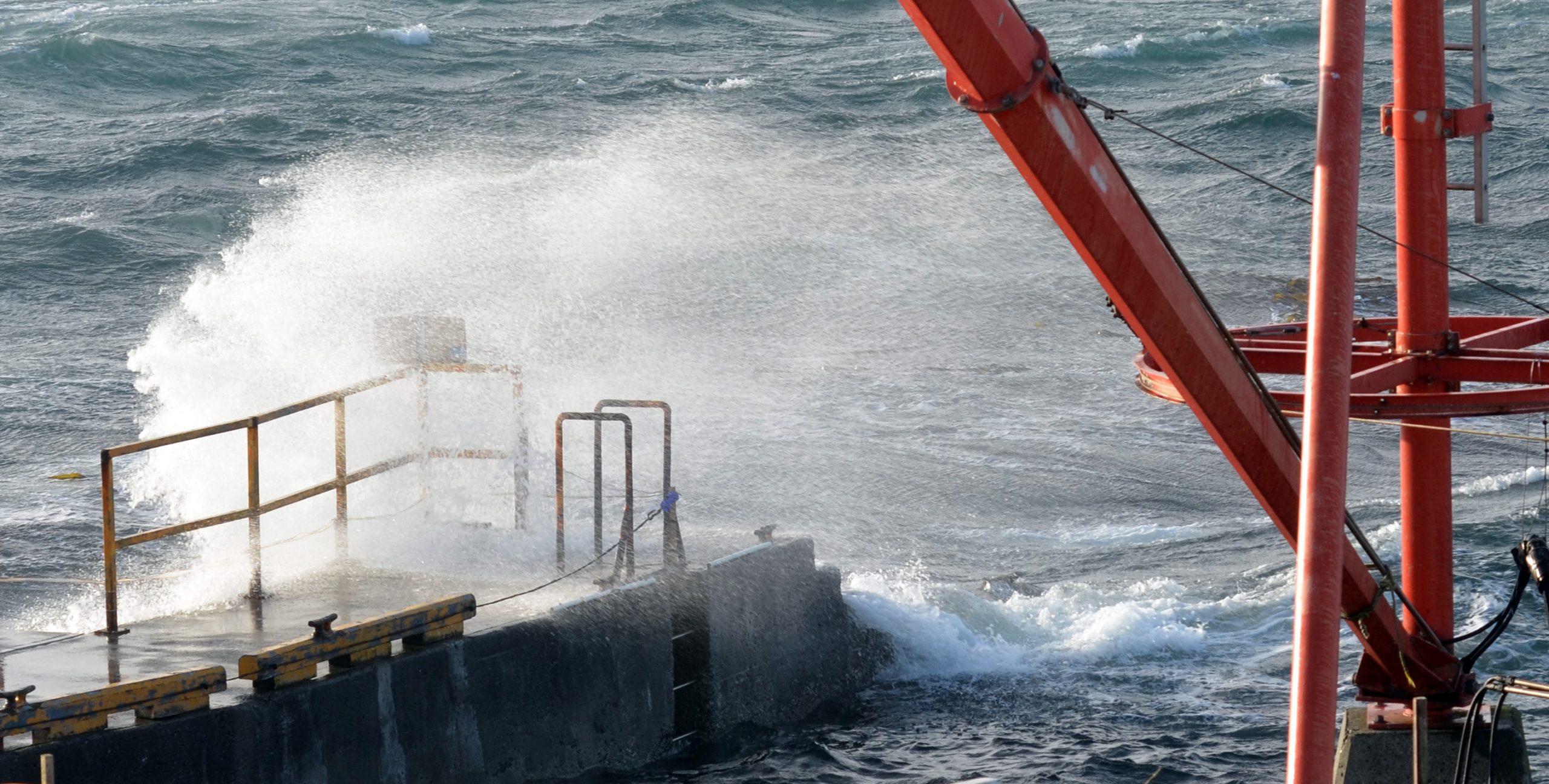
Conditions on the Jetty this evening at the time when the sea surface temperature and salinity measurements should have been measured. It is exciting to watch the seas in these high winds with gusts up to 46 knots, although it is becoming difficult to see clearly through the windows covered in water droplets.
June 2025 Seawater Data
Daily surface temperature and salinity readings taken at the time of maximum flooding current.
| Station | RACE ROCKS | ||
| Observer | Christine | Month: June | |
| YSI ID: | 3 | Year: 2025 | |
| YSI | YSI | ||
| Temp | Salinity | ||
| Day | Time | ºC | ppt |
| 1 | 19:45 | 9.2 | 30.4 |
| 2 | 20:35 | 10.0 | 29.9 |
| 3 | . | . | . |
| 4 | 10:15 | 10.2 | 30.0 |
| 5 | 12:25 | 10.9 | 29.2 |
| 6 | 12:35 | 11.0 | 29.2 |
| 7 | 12:40 | 11.3 | 28.0 |
| 8 | 13:25 | 11.4 | 28.8 |
| 9 | 13:36 | 11.4 | 28.7 |
| 10 | 14:05 | 10.8 | 29.3 |
| 11 | 14:35 | 10.4 | 29.2 |
| 12 | 15:20 | 10.3 | 28.8 |
| 13 | 15:45 | 9.8 | 29.6 |
| 14 | 16:30 | 10.0 | 29.0 |
| 15 | 17:15 | 9.9 | 29.5 |
| 16 | 18:03 | 10.1 | 29.7 |
| 17 | 17:00 | 10.1 | 28.7 |
| 18 | 18:05 | 9.9 | 29.9 |
| 19 | . | . | . |
| 20 | 10:00 | 9.7 | 29.7 |
| 21 | 11:30 | 9.7 | 29.7 |
| 22 | 12:15 | 9.7 | 29.9 |
| 23 | 13:00 | 9.6 | 30.0 |
| 24 | 13:33 | 9.6 | 29.6 |
| 25 | 14:23 | 9.1 | 30.2 |
| 26 | 15:17 | 9.0 | 29.9 |
| 27 | 16:33 | 9.1 | 30.3 |
| 28 | 17:36 | 9.0 | 30.0 |
| 29 | 18:25 | 9.7 | 30.2 |
| 30 | . | . | . |
Banded gulls, June 2025
The glaucous-winged gulls that breed and nest on Race Rocks are present year-round in the Salish Sea. They are being studied as indicators of ecosystem health by Environment and Climate Change Canada’s Salish Sea Marine Bird Monitoring and Conservation Program. Individual birds are identified by their colour bands. This allows researchers to track their movements over time, their location preferences (site fidelity) and survival. They also collect blood and feathers samples for genetic, physiological, pathogen, parasite and contaminant analyses. Some of the birds get GPS tags so their precise movements can be followed. The project has been running since 2020. The researchers visited over 300 sites and banded over 800 gulls.
I sighted and reported three of the banded birds in June and July 2024 and two so far on June 28 and 29, 2025. The project lead Dr. Mark Hipfner says the last gull reported who was banded in Tofino is of particular interest as it was banded in its first winter of life “…so this is its first year in full adult plumage. These ones are ESPECIALLY valuable because we ultimately want to derive an estimate of age-specific survival and we also want to monitor changes in plumage with age.”
Like the gulls I reported, the majority of glaucous-winged gulls stay close to home. In their 2025 report in Map 2 (see below), they provide the travel details for one adventurous gull who went from Prince Rupert to Alaska to breed and then back again over the course of one year. That inspirational bird spent a lot time in the Copper River Delta and in the area of Kayak Island. I am envious as those are two place I would LOVE to see.
They have one more year to go in the study but will the continue the banding program after that. Soon they will be able to report on gull habitat use, diet (via stable isotope analysis they can tell if the gulls feed in marine versus inland areas), physiological health, age, disease and contaminant levels. From the genomics data they will be able to determine provenance (the location they came from), population structure, and the extent of hybridization.
To learn more about this project and the banded glaucous-winged, California and short-billed (Mew) gulls, see their 2025, 2023 and 2022 reports.
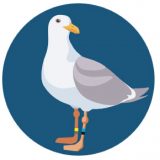
How to report a banded gull? Illustration from the ECCC poster
As of this spring, they had over a 1000 reports of banded gulls from the public. To contribute to this project and report a banded gull, take a photo showing the bands, record date and location and send to:
- online form
- or to report with your phone, see their poster
Wildlife notes:
A gull nest with two eggs has been abandoned. “Perfect Perch” (last photographed on her nest on May 29) has not been on the nest for the last three days. This is something I did not observe last summer. Strangely the eggs are still in the nest and have not been taken.
Facility work:
- cleaned the solar panels
- worked on Jetty electric fence replacing the gate parts by the steps and the stainless tie bands.
Vessels:
- Ecotourism: 1
- Private: 2
Weather:
- Clear skies. Moderate westerlies building to gale force by early evening! The house is quacking and shaking. Daytime temperatures: low 11, high 15. Some part of Vancouver Island are close to 30 degrees and I have a fire going to warm up the house.
I did not collected the sea water temperature and salinity data tonight at 19:00 as the wind was 35 knots.
A grand day out
Wildlife notes
I am preparing myself for the shock of finding dead chicks that have mistakenly wandered into enemy territory. Thankfully I haven’t come across any yet. It was a warm glorious day, a perfect day to admire the harbour seals reluctant to leave Seal Rocks until the waves finally pushed them off. The Keeper’s house oystercatchers seem to have separated their duties. One is still on the original nest while the other is busy a few feet away feeding the chick that hatched yesterday. A rock pigeon visited today. They are not uncommon in the city or public markets, but here it was a unusual treat to see this bird.
Facility notes
- cleaned solar panels
- measured specific gravity after the solar panels brought the battery to 100%
Vessels
- Ecotourism: 18
- Private: 8
Weather
Winds light and variable. Skies clear. Daytime temperatures: low 13, high 21.

